322 papers:
 WICSA-2015-NaabBLHEMCK #architecture #case study #design #ecosystem #experience #mobile #prototype #scalability #why
WICSA-2015-NaabBLHEMCK #architecture #case study #design #ecosystem #experience #mobile #prototype #scalability #why- Why Data Needs more Attention in Architecture Design — Experiences from Prototyping a Large-Scale Mobile App Ecosystem (MN, SB, TL, SH, AE, DM, RC, FK), pp. 75–84.
 CASE-2015-GoeckeE #automation #robust #towards
CASE-2015-GoeckeE #automation #robust #towards- Towards a more robust automated MAG welding (SFG, MES), pp. 417–418.
 ICSME-2015-XiaLWY #analysis #bibliography #recommendation
ICSME-2015-XiaLWY #analysis #bibliography #recommendation- Who should review this change?: Putting text and file location analyses together for more accurate recommendations (XX, DL, XW, XY), pp. 261–270.
 MSR-2015-OrtuADTMT #effectiveness #empirical
MSR-2015-OrtuADTMT #effectiveness #empirical- Are Bullies More Productive? Empirical Study of Affectiveness vs. Issue Fixing Time (MO, BA, GD, PT, MM, RT), pp. 303–313.
 CIAA-2015-GruberHJ #automaton #finite #nondeterminism
CIAA-2015-GruberHJ #automaton #finite #nondeterminism- More on Deterministic and Nondeterministic Finite Cover Automata — Extended Abstract (HG, MH, SJ), pp. 114–126.
 LATA-2015-BoichutCR #approximate #precise #towards
LATA-2015-BoichutCR #approximate #precise #towards- Towards More Precise Rewriting Approximations (YB, JC, PR), pp. 652–663.
 CSCW-2015-SiangliulueAGD #collaboration #scalability #towards
CSCW-2015-SiangliulueAGD #collaboration #scalability #towards- Toward Collaborative Ideation at Scale: Leveraging Ideas from Others to Generate More Creative and Diverse Ideas (PS, KCA, KZG, SPD), pp. 937–945.
 DUXU-DD-2015-WuC #effectiveness
DUXU-DD-2015-WuC #effectiveness- Products with Biomimetic Shapes Convey Emotions More Effectively (TYW, HKC), pp. 559–566.
 KDD-2015-FeldmanT #approximate #big data #constraints #matrix
KDD-2015-FeldmanT #approximate #big data #constraints #matrix- More Constraints, Smaller Coresets: Constrained Matrix Approximation of Sparse Big Data (DF, TT), pp. 249–258.
 SEKE-2015-ChenZWQJW #api #mining #protocol
SEKE-2015-ChenZWQJW #api #mining #protocol- Extracting More Object Usage Scenarios for API Protocol Mining (DC, YZ, RW, BQ, JJ, WW), pp. 607–612.
 REFSQ-2015-LiHT #case study #formal method #performance #requirements #towards
REFSQ-2015-LiHT #case study #formal method #performance #requirements #towards- Towards More Efficient Requirements Formalization: A Study (WL, JHH, MT), pp. 181–197.
 SPLC-2015-GreggSC #product line
SPLC-2015-GreggSC #product line- The more you do, the more you save: the superlinear cost avoidance effect of systems product line engineering (SPG, RS, PC), pp. 303–310.
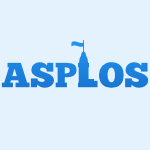 ASPLOS-2015-PangDL #less is more
ASPLOS-2015-PangDL #less is more- More is Less, Less is More: Molecular-Scale Photonic NoC Power Topologies (JP, CD, ARL), pp. 283–296.
 PPoPP-2015-Gramoli #algorithm #concurrent #impact analysis
PPoPP-2015-Gramoli #algorithm #concurrent #impact analysis- More than you ever wanted to know about synchronization: synchrobench, measuring the impact of the synchronization on concurrent algorithms (VG), pp. 1–10.
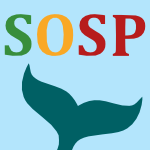 SOSP-2015-TsaiZRJZP #file system #how
SOSP-2015-TsaiZRJZP #file system #how- How to get more value from your file system directory cache (CcT, YZ, JR, YJ, TZ, DEP), pp. 441–456.
 CAV-2015-BacchusK #satisfiability #set #using
CAV-2015-BacchusK #satisfiability #set #using- Using Minimal Correction Sets to More Efficiently Compute Minimal Unsatisfiable Sets (FB, GK), pp. 70–86.
 WICSA-2014-KnodelN #architecture #evaluation #industrial
WICSA-2014-KnodelN #architecture #evaluation #industrial- Software Architecture Evaluation in Practice: Retrospective on More Than 50 Architecture Evaluations in Industry (JK, MN), pp. 115–124.
 DATE-2014-HeinigDHMWHGBKR #integration
DATE-2014-HeinigDHMWHGBKR #integration- System integration — The bridge between More than Moore and More Moore (AH, MD, AH, FM, TW, KH, AG, RB, SK, JR), pp. 1–9.
 HT-2014-AbbasiZTL #network #social
HT-2014-AbbasiZTL #network #social- Am i more similar to my followers or followees?: analyzing homophily effect in directed social networks (MAA, RZ, JT, HL), pp. 200–205.
 PODS-2014-AmelootKNZ #declarative #fine-grained #network
PODS-2014-AmelootKNZ #declarative #fine-grained #network- Weaker forms of monotonicity for declarative networking: a more fine-grained answer to the calm-conjecture (TJA, BK, FN, DZ), pp. 64–75.
 VLDB-2015-ThenKCHPK0V14 #graph #multi #performance #traversal
VLDB-2015-ThenKCHPK0V14 #graph #multi #performance #traversal- The More the Merrier: Efficient Multi-Source Graph Traversal (MT, MK, FC, TAHV, KP, AK, TN, HTV), pp. 449–460.
 TACAS-2014-HerreraWP #network #query #reduction
TACAS-2014-HerreraWP #network #query #reduction- Quasi-Equal Clock Reduction: More Networks, More Queries (CH, BW, AP), pp. 295–309.
 TACAS-2014-SlabyS #contest #precise #slicing
TACAS-2014-SlabyS #contest #precise #slicing- Symbiotic 2: More Precise Slicing — (Competition Contribution) (JS, JS), pp. 415–417.
 CSMR-WCRE-2014-KnodelN #architecture #industrial
CSMR-WCRE-2014-KnodelN #architecture #industrial- Mitigating the Risk of software change in practice: Retrospective on more than 50 architecture evaluations in industry (Keynote paper) (JK, MN), pp. 2–17.
 CSMR-WCRE-2014-XiaFLCW #behaviour #learning #multi #towards
CSMR-WCRE-2014-XiaFLCW #behaviour #learning #multi #towards- Towards more accurate multi-label software behavior learning (XX, YF, DL, ZC, XW), pp. 134–143.
 ICPC-2014-ZhouXLTW #api #categorisation #towards
ICPC-2014-ZhouXLTW #api #categorisation #towards- Towards more accurate content categorization of API discussions (BZ, XX, DL, CT, XW), pp. 95–105.
 STOC-2014-SahaiW #encryption #how #obfuscation
STOC-2014-SahaiW #encryption #how #obfuscation- How to use indistinguishability obfuscation: deniable encryption, and more (AS, BW), pp. 475–484.
 AFL-2014-HolzerJ #automaton #product line #regular expression
AFL-2014-HolzerJ #automaton #product line #regular expression- More Structural Characterizations of Some Subregular Language Families by Biautomata (MH, SJ), pp. 271–285.
 ICALP-v2-2014-KosowskiP #case study #difference
ICALP-v2-2014-KosowskiP #case study #difference- Does Adding More Agents Make a Difference? A Case Study of Cover Time for the Rotor-Router (AK, DP), pp. 544–555.
 SEFM-2014-HusterHERBKR #flexibility #invariant #specification
SEFM-2014-HusterHERBKR #flexibility #invariant #specification- More Flexible Object Invariants with Less Specification Overhead (SH, PH, HE, JR, SB, TK, WR), pp. 302–316.
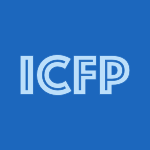 ICFP-2014-Fisher #formal method #using
ICFP-2014-Fisher #formal method #using- Using formal methods to enable more secure vehicles: DARPA’s HACMS program (KF), p. 1.
 ICFP-2014-StansiferW #flexibility #named #programming
ICFP-2014-StansiferW #flexibility #named #programming- Romeo: a system for more flexible binding-safe programming (PS, MW), pp. 53–65.
 ICFP-2014-Winograd-CortH #first-order #how
ICFP-2014-Winograd-CortH #first-order #how- Settable and non-interfering signal functions for FRP: how a first-order switch is more than enough (DWC, PH), pp. 213–225.
 CHI-2014-BakhshiSG
CHI-2014-BakhshiSG- Faces engage us: photos with faces attract more likes and comments on Instagram (SB, DAS, EG), pp. 965–974.
 CHI-2014-BurszteinMFBMJ
CHI-2014-BurszteinMFBMJ- Easy does it: more usable CAPTCHAs (EB, AM, CF, SB, JCM, DJ), pp. 2637–2646.
 CHI-2014-FerreiraFK #visualisation
CHI-2014-FerreiraFK #visualisation- Sample-oriented task-driven visualizations: allowing users to make better, more confident decisions (NF, DF, ACK), pp. 571–580.
 CHI-2014-WeigelMS #comprehension #how #mobile #people
CHI-2014-WeigelMS #comprehension #how #mobile #people- More than touch: understanding how people use skin as an input surface for mobile computing (MW, VM, JS), pp. 179–188.
 HCI-AS-2014-Phillips #mobile
HCI-AS-2014-Phillips #mobile- Mobile Users Are More Vigilant Than Situated Users (MGP), pp. 166–177.
 LCT-TRE-2014-ShimizuO #effectiveness #learning #question
LCT-TRE-2014-ShimizuO #effectiveness #learning #question- Which Is More Effective for Learning German and Japanese Language, Paper or Digital? (RS, KO), pp. 309–318.
 ECIR-2014-BastH #information management
ECIR-2014-BastH #information management- More Informative Open Information Extraction via Simple Inference (HB, EH), pp. 585–590.
 ICPR-2014-SlitiHBA #analysis #robust #using
ICPR-2014-SlitiHBA #analysis #robust #using- A More Robust Mean Shift Tracker Using Joint Monogenic Signal Analysis and Color Histogram (OS, HH, FB, HA), pp. 2453–2458.
 SIGIR-2014-WanZ #named #summary
SIGIR-2014-WanZ #named #summary- CTSUM: extracting more certain summaries for news articles (XW, JZ), pp. 787–796.
 SKY-2014-OsetinskyY #abstraction #case study #effectiveness #legacy #using
SKY-2014-OsetinskyY #abstraction #case study #effectiveness #legacy #using- Working More Effectively with Legacy Code Using Domain Knowledge and Abstractions: A Case Study (IO, RY), pp. 63–70.
 ECMFA-2014-DouBB #named #ocl
ECMFA-2014-DouBB #named #ocl- OCLR: A More Expressive, Pattern-Based Temporal Extension of OCL (WD, DB, LCB), pp. 51–66.
 RE-2014-Anton #privacy #security
RE-2014-Anton #privacy #security- Now more than ever: Privacy and security are required (keynote) (AIA), p. 2.
 ICSE-2014-KleinMAH #named #robust
ICSE-2014-KleinMAH #named #robust- Brownout: building more robust cloud applications (CK, MM, KEÅ, FHR), pp. 700–711.
 ICSE-2014-LiTH #energy #performance #smarttech #web
ICSE-2014-LiTH #energy #performance #smarttech #web- Making web applications more energy efficient for OLED smartphones (DL, AHT, WGJH), pp. 527–538.
 OSDI-2014-MuCZLL #concurrent #distributed #transaction
OSDI-2014-MuCZLL #concurrent #distributed #transaction- Extracting More Concurrency from Distributed Transactions (SM, YC, YZ, WL, JL), pp. 479–494.
 CBSE-2013-GortonLLED #case study #component #experience #using
CBSE-2013-GortonLLED #case study #component #experience #using- Build less code deliver more science: an experience report on composing scientific environments using component-based and commodity software platforms (IG, YL, CL, TE, KKvD), pp. 159–168.
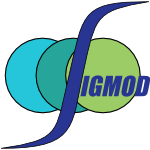 SIGMOD-2013-WoodsTA #performance
SIGMOD-2013-WoodsTA #performance- Less watts, more performance: an intelligent storage engine for data appliances (LW, JT, GA), pp. 1073–1076.
 VLDB-2013-RamanABCKKLLLLMMPSSSSZ
VLDB-2013-RamanABCKKLLLLMMPSSSSZ- DB2 with BLU Acceleration: So Much More than Just a Column Store (VR, GKA, RB, NC, DK, VK, JL, SL, SL, GML, TM, RM, IP, BS, DS, RS, AJS, LZ), pp. 1080–1091.
 VLDB-2014-YuLZCP13 #effectiveness
VLDB-2014-YuLZCP13 #effectiveness- More is Simpler: Effectively and Efficiently Assessing Node-Pair Similarities Based on Hyperlinks (WY, XL, WZ, LC, JP), pp. 13–24.
 MSR-2013-AlipourHS #approach #debugging #detection #towards
MSR-2013-AlipourHS #approach #debugging #detection #towards- A contextual approach towards more accurate duplicate bug report detection (AA, AH, ES), pp. 183–192.
 CIAA-2013-HolzerJ #algorithm #robust
CIAA-2013-HolzerJ #algorithm #robust- Brzozowski’s Minimization Algorithm — More Robust than Expected — (Extended Abstract) (MH, SJ), pp. 181–192.
 LATA-2013-HutagalungLL #automaton #game studies #simulation
LATA-2013-HutagalungLL #automaton #game studies #simulation- Revealing vs. Concealing: More Simulation Games for Büchi Inclusion (MH, ML, ÉL), pp. 347–358.
 CHI-2013-GomesNV13a #case study #flexibility #named #smarttech
CHI-2013-GomesNV13a #case study #flexibility #named #smarttech- MorePhone: a study of actuated shape deformations for flexible thin-film smartphone notifications (AG, AN, RV), pp. 583–592.
 CHI-2013-KimSLKL13a #named
CHI-2013-KimSLKL13a #named- TapBoard: making a touch screen keyboard more touchable (SK, JS, GL, HK, WL), pp. 553–562.
 CHI-2013-KnijnenburgKJ #privacy #question
CHI-2013-KnijnenburgKJ #privacy #question- Preference-based location sharing: are more privacy options really better? (BPK, AK, HJ), pp. 2667–2676.
 CHI-2013-LaseckiMB #crowdsourcing #effectiveness #realtime
CHI-2013-LaseckiMB #crowdsourcing #effectiveness #realtime- Warping time for more effective real-time crowdsourcing (WSL, CDM, JPB), pp. 2033–2036.
 DUXU-WM-2013-ShenP #performance
DUXU-WM-2013-ShenP #performance- Re-thinking Bookmark Management — Less Choice Is More Efficient (STS, SDP), pp. 304–312.
 HIMI-LCCB-2013-LindholmBN #interactive
HIMI-LCCB-2013-LindholmBN #interactive- I See, Please Tell Me More — Exploring Virtual Agents as Interactive Storytellers (DL, EPB, TN), pp. 89–98.
 ICML-c3-2013-SchaulZL #learning
ICML-c3-2013-SchaulZL #learning- No more pesky learning rates (TS, SZ, YL), pp. 343–351.
 KDIR-KMIS-2013-DowGABP #information management
KDIR-KMIS-2013-DowGABP #information management- Knowing More about Knowledge Management at ESA (RMD, DG, RCA, DB, SP), pp. 281–289.
 KEOD-2013-Surynek #bibliography #collaboration #web
KEOD-2013-Surynek #bibliography #collaboration #web- A Survey of Collaborative Web Search — Through Collaboration among Search Engine Users to More Relevant Results (PS), pp. 331–336.
 SAC-2013-HunnyZW #adaptation #named
SAC-2013-HunnyZW #adaptation #named- OSDC: adapting ODC for developing more secure software (UH, MZ, KW), pp. 1131–1136.
 SOSP-2013-MoraruAK
SOSP-2013-MoraruAK- There is more consensus in Egalitarian parliaments (IM, DGA, MK), pp. 358–372.
 DAC-2012-LiANSVZ #design #physics #predict
DAC-2012-LiANSVZ #design #physics #predict- Guiding a physical design closure system to produce easier-to-route designs with more predictable timing (ZL, CJA, GJN, CCNS, NV, NYZ), pp. 465–470.
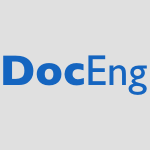 DocEng-2012-MancillaP #named
DocEng-2012-MancillaP #named- Charactles: more than characters (BM, JP), pp. 241–244.
 VLDB-2013-DongSS12 #integration #less is more
VLDB-2013-DongSS12 #integration #less is more- Less is More: Selecting Sources Wisely for Integration (XLD, BS, DS), pp. 37–48.
 TACAS-2012-BabiakKRS #automaton #ltl #performance
TACAS-2012-BabiakKRS #automaton #ltl #performance- LTL to Büchi Automata Translation: Fast and More Deterministic (TB, MK, VR, JS), pp. 95–109.
 WRLA-2012-ArusoaieSER #interactive #maude
WRLA-2012-ArusoaieSER #interactive #maude- Making Maude Definitions More Interactive (AA, TFS, CE, GR), pp. 83–98.
 ICSM-2012-QiML #automation #performance #scalability #source code #using
ICSM-2012-QiML #automation #performance #scalability #source code #using- Making automatic repair for large-scale programs more efficient using weak recompilation (YQ, XM, YL), pp. 254–263.
 CHI-2012-KratzMS #gesture
CHI-2012-KratzMS #gesture- Making gestural input from arm-worn inertial sensors more practical (LK, DM, TSS), pp. 1747–1750.
 CHI-2012-KuleszaSBK #personalisation
CHI-2012-KuleszaSBK #personalisation- Tell me more?: the effects of mental model soundness on personalizing an intelligent agent (TK, SS, MMB, IK), pp. 1–10.
 CHI-2012-MerrittM
CHI-2012-MerrittM- Protecting artificial team-mates: more seems like less (TRM, KM), pp. 2793–2802.
 CHI-2012-TangHS #social
CHI-2012-TangHS #social- The implications of offering more disclosure choices for social location sharing (KPT, JIH, DPS), pp. 391–394.
 CIKM-2012-ZhuGCL #behaviour #mining #query #recommendation
CIKM-2012-ZhuGCL #behaviour #mining #query #recommendation- More than relevance: high utility query recommendation by mining users’ search behaviors (XZ, JG, XC, YL), pp. 1814–1818.
 ECIR-2012-NeumayerBN12a #effectiveness #semantics
ECIR-2012-NeumayerBN12a #effectiveness #semantics- When Simple is (more than) Good Enough: Effective Semantic Search with (almost) no Semantics (RN, KB, KN), pp. 540–543.
 ECIR-2012-ToramanC #categorisation #performance
ECIR-2012-ToramanC #categorisation #performance- Squeezing the Ensemble Pruning: Faster and More Accurate Categorization for News Portals (CT, FC), pp. 508–511.
 KDD-2012-GrosskreutzPR
KDD-2012-GrosskreutzPR- An enhanced relevance criterion for more concise supervised pattern discovery (HG, DP, SR), pp. 1442–1450.
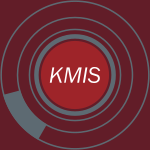 KMIS-2012-RakthinCC #effectiveness
KMIS-2012-RakthinCC #effectiveness- More Effective Transfer of Competitor and Customer Intelligence — Mediating Roles of Common Knowledge Sharing and Source Credibility (SR, RJC, SC), pp. 251–256.
 RecSys-2012-ShiKBLOH #collaboration #learning #named #rank
RecSys-2012-ShiKBLOH #collaboration #learning #named #rank- CLiMF: learning to maximize reciprocal rank with collaborative less-is-more filtering (YS, AK, LB, ML, NO, AH), pp. 139–146.
 SEKE-2012-CookN #aspect-oriented #concept #programming #towards
SEKE-2012-CookN #aspect-oriented #concept #programming #towards- Towards More Generic Aspect-Oriented Programming: Rethinking the AOP Joinpoint Concept (JC, AN), pp. 154–157.
 SIGIR-2012-GarkavijsTK
SIGIR-2012-GarkavijsTK- GLASE 0.1: eyes tell more than mice (VG, MT, NK), pp. 1085–1086.
 LOPSTR-2012-NishidaV #term rewriting
LOPSTR-2012-NishidaV #term rewriting- Computing More Specific Versions of Conditional Rewriting Systems (NN, GV), pp. 137–154.
 REFSQ-2012-GenonCTHM #semantics #syntax #towards #visual notation
REFSQ-2012-GenonCTHM #semantics #syntax #towards #visual notation- Towards a More Semantically Transparent i* Visual Syntax (NG, PC, HT, PH, DLM), pp. 140–146.
 SAC-2012-MatsubaraMYUIK #algorithm #named #performance #re-engineering
SAC-2012-MatsubaraMYUIK #algorithm #named #performance #re-engineering- CCDR-PAID: more efficient cache-conscious PAID algorithm by data reconstruction (YM, JM, GY, YU, SI, HK), pp. 193–198.
 ICSE-2012-ZhouZL #debugging #information retrieval #locality
ICSE-2012-ZhouZL #debugging #information retrieval #locality- Where should the bugs be fixed? More accurate information retrieval-based bug localization based on bug reports (JZ, HZ, DL), pp. 14–24.
 PLEASE-2012-BoucherAHPAH #perspective #re-engineering #reliability #towards
PLEASE-2012-BoucherAHPAH #perspective #re-engineering #reliability #towards- Towards more reliable configurators: a re-engineering perspective (QB, EKA, AH, GP, MA, PH), pp. 29–32.
 SAT-2012-LiffitonM #constraints #for free
SAT-2012-LiffitonM #constraints #for free- A Cardinality Solver: More Expressive Constraints for Free — (Poster Presentation) (MHL, JCM), pp. 485–486.
 VMCAI-2012-Nipkow #education #proving #semantics
VMCAI-2012-Nipkow #education #proving #semantics- Teaching Semantics with a Proof Assistant: No More LSD Trip Proofs (TN), pp. 24–38.
 ASE-2011-SunLKJ #debugging #retrieval #towards
ASE-2011-SunLKJ #debugging #retrieval #towards- Towards more accurate retrieval of duplicate bug reports (CS, DL, SCK, JJ), pp. 253–262.
 ASE-2011-WeiRFPHSNM #contract #fault #testing
ASE-2011-WeiRFPHSNM #contract #fault #testing- Stateful testing: Finding more errors in code and contracts (YW, HR, CAF, YP, AH, MJS, MN, BM), pp. 440–443.
 SIGMOD-2011-TekleL #datalog #performance #query #set
SIGMOD-2011-TekleL #datalog #performance #query #set- More efficient datalog queries: subsumptive tabling beats magic sets (KTT, YAL), pp. 661–672.
 CIAA-2011-LonatiP #2d #automaton #towards
CIAA-2011-LonatiP #2d #automaton #towards- Towards More Expressive 2D Deterministic Automata (VL, MP), pp. 225–237.
 CHI-2011-LucaFMSHKH #internet #security #visualisation
CHI-2011-LucaFMSHKH #internet #security #visualisation- Does MoodyBoard make internet use more secure?: evaluating an ambient security visualization tool (ADL, BF, MEM, JS, DH, NK, HH), pp. 887–890.
 CHI-2011-ReederBCRV #usability
CHI-2011-ReederBCRV #usability- More than skin deep: measuring effects of the underlying model on access-control system usability (RWR, LB, LFC, MKR, KV), pp. 2065–2074.
 CHI-2011-VihavainenMSCC #collaboration #human-computer #mobile #music #social #video
CHI-2011-VihavainenMSCC #collaboration #human-computer #mobile #music #social #video- We want more: human-computer collaboration in mobile social video remixing of music concerts (SV, SM, LS, FC, IDDC), pp. 287–296.
 CHI-2011-YeeDYN
CHI-2011-YeeDYN- Do men heal more when in drag?: conflicting identity cues between user and avatar (NY, ND, MY, LN), pp. 773–776.
 DUXU-v1-2011-ChampneyKS #design #performance #process
DUXU-v1-2011-ChampneyKS #design #performance #process- Making the Design Process More Usable: Aligning Design with User Performance (RKC, CK, KMS), pp. 33–42.
 HCI-ITE-2011-HipplerKLPKJ #empirical
HCI-ITE-2011-HipplerKLPKJ #empirical- More than Speed? An Empirical Study of Touchscreens and Body Awareness on an Object Manipulation Task (RKH, DSK, LML, GMP, BAK, SDJ), pp. 33–42.
 IDGD-2011-Gould #question
IDGD-2011-Gould #question- Seeing the World in 5 Dimensions — More or Less? (EWG), pp. 302–311.
 CIKM-2011-PCK #problem #repository #trade-off
CIKM-2011-PCK #problem #repository #trade-off- More or better: on trade-offs in compacting textual problem solution repositories (DP, SC, DK), pp. 2321–2324.
 CIKM-2011-WahabzadaKPB #performance #scheduling
CIKM-2011-WahabzadaKPB #performance #scheduling- More influence means less work: fast latent dirichlet allocation by influence scheduling (MW, KK, AP, CB), pp. 2273–2276.
 ECIR-2011-KoolenK #effectiveness #question #retrieval #semantics
ECIR-2011-KoolenK #effectiveness #question #retrieval #semantics- Are Semantically Related Links More Effective for Retrieval? (MK, JK), pp. 92–103.
 KDD-2011-McCue #security
KDD-2011-McCue #security- Operational security analytics: doing more with less (CM), p. 782.
 RecSys-2011-CamposDS #evaluation #matrix #predict #recommendation #testing #towards
RecSys-2011-CamposDS #evaluation #matrix #predict #recommendation #testing #towards- Towards a more realistic evaluation: testing the ability to predict future tastes of matrix factorization-based recommenders (PGC, FD, MASM), pp. 309–312.
 Onward-2011-CukierY #research
Onward-2011-CukierY #research- The artist in the computer scientist: more humanity to our research (DC, JWY), pp. 129–136.
 OOPSLA-2011-DavidC #precise #specification #verification
OOPSLA-2011-DavidC #precise #specification #verification- Immutable specifications for more concise and precise verification (CD, WNC), pp. 359–374.
 GPCE-2011-ArnoldusBS #less is more #metalanguage
GPCE-2011-ArnoldusBS #less is more #metalanguage- Less is more: unparser-completeness of metalanguages for template engines (BJA, MvdB, AS), pp. 137–146.
 POPL-2011-DimoulasFFF #contract
POPL-2011-DimoulasFFF #contract- Correct blame for contracts: no more scapegoating (CD, RBF, CF, MF), pp. 215–226.
 ICSE-2011-NohrerRE #consistency #effectiveness #nondeterminism
ICSE-2011-NohrerRE #consistency #effectiveness #nondeterminism- Positive effects of utilizing relationships between inconsistencies for more effective inconsistency resolution (AN, AR, AE), pp. 864–867.
 LDTA-2011-MametjanovWL #precise #type system
LDTA-2011-MametjanovWL #precise #type system- More precise typing of rewrite strategies (AM, VLW, RL), p. 3.
 VMCAI-2011-AlbertGM #cost analysis #precise
VMCAI-2011-AlbertGM #cost analysis #precise- More Precise Yet Widely Applicable Cost Analysis (EA, SG, ANM), pp. 38–53.
 VLDB-2010-ChaytorW #privacy
VLDB-2010-ChaytorW #privacy- Small Domain Randomization: Same Privacy, More Utility (RC, KW), pp. 608–618.
 FASE-2010-BacchelliDL #fault #question
FASE-2010-BacchelliDL #fault #question- Are Popular Classes More Defect Prone? (AB, MD, ML), pp. 59–73.
 PEPM-2010-HoldermansH #strict
PEPM-2010-HoldermansH #strict- Making “stricterness” more relevant (SH, JH), pp. 121–130.
 ILC-2010-RideauG #coordination #evolution
ILC-2010-RideauG #coordination #evolution- Evolving ASDF: more cooperation, less coordination (FRR, RPG), pp. 29–42.
 CHI-2010-AulaKG #behaviour #how #question
CHI-2010-AulaKG #behaviour #how #question- How does search behavior change as search becomes more difficult? (AA, RMK, ZG), pp. 35–44.
 CHI-2010-SaponasTMTL #interface
CHI-2010-SaponasTMTL #interface- Making muscle-computer interfaces more practical (TSS, DST, DM, JT, JAL), pp. 851–854.
 ICEIS-ISAS-2010-Tagg #concept #modelling #ontology #towards
ICEIS-ISAS-2010-Tagg #concept #modelling #ontology #towards- Towards a More Relationship-friendly Ontology Foundation for Conceptual Modelling (RT), pp. 368–373.
 ICPR-2010-AdamsWDMBG #feature model #less is more #recognition
ICPR-2010-AdamsWDMBG #feature model #less is more #recognition- Genetic-Based Type II Feature Extraction for Periocular Biometric Recognition: Less is More (JA, DLW, GVD, PEM, KSB, GG), pp. 205–208.
 ICPR-2010-ForsbergAK #estimation #image #parallel
ICPR-2010-ForsbergAK #estimation #image #parallel- Parallel Scales for More Accurate Displacement Estimation in Phase-Based Image Registration (DF, MTA, HK), pp. 2329–2332.
 ICPR-2010-GuoC10a #constraints
ICPR-2010-GuoC10a #constraints- Triangle-Constraint for Finding More Good Features (XG, XC), pp. 1393–1396.
 ICPR-2010-KinnunenKLLK #categorisation #random #set #visual notation
ICPR-2010-KinnunenKLLK #categorisation #random #set #visual notation- Making Visual Object Categorization More Challenging: Randomized Caltech-101 Data Set (TK, JKK, LL, JL, HK), pp. 476–479.
 ICPR-2010-Martin-FelezMS #gender #recognition #representation #towards
ICPR-2010-Martin-FelezMS #gender #recognition #representation #towards- Towards a More Realistic Appearance-Based Gait Representation for Gender Recognition (RMF, RAM, JSS), pp. 3810–3813.
 KDD-2010-TangAOM #empirical #framework #performance
KDD-2010-TangAOM #empirical #framework #performance- Overlapping experiment infrastructure: more, better, faster experimentation (DT, AA, DO, MM), pp. 17–26.
 SEKE-2010-AlhassanCB #analysis #fault #network #people #social
SEKE-2010-AlhassanCB #analysis #fault #network #people #social- Do More People Make the Code More Defect Prone?: Social Network Analysis in OSS Projects (SA, BC, ABB), pp. 93–98.
 SEKE-2010-ZhangZH #model checking #precise
SEKE-2010-ZhangZH #model checking #precise- Some Improvements for More Precise Model Checking (ZZ, QZ, MH), pp. 106–112.
 SIGIR-2010-YueGCZJ #evaluation #learning #retrieval #statistics
SIGIR-2010-YueGCZJ #evaluation #learning #retrieval #statistics- Learning more powerful test statistics for click-based retrieval evaluation (YY, YG, OC, YZ, TJ), pp. 507–514.
 REFSQ-2010-BrillSK #case study #question #requirements
REFSQ-2010-BrillSK #case study #question #requirements- Videos vs. Use Cases: Can Videos Capture More Requirements under Time Pressure? (OB, KS, EK), pp. 30–44.
 CC-2010-BenabderrahmanePCB
CC-2010-BenabderrahmanePCB- The Polyhedral Model Is More Widely Applicable Than You Think (MWB, LNP, AC, CB), pp. 283–303.
 ICTSS-2010-FalconeFJMM
ICTSS-2010-FalconeFJMM- More Testable Properties (YF, JCF, TJ, HM, LM), pp. 30–46.
 DAC-2009-PlishkerSB #data flow #effectiveness #scheduling
DAC-2009-PlishkerSB #data flow #effectiveness #scheduling- Mode grouping for more effective generalized scheduling of dynamic dataflow applications (WP, NS, SSB), pp. 923–926.
 ITiCSE-2009-Gal-EzerSZ #gender
ITiCSE-2009-Gal-EzerSZ #gender- Computer science issues in high school: gender and more... (JGE, DS, EZ), pp. 278–282.
 ICPC-2009-PopescuGM #analysis #dependence #precise
ICPC-2009-PopescuGM #analysis #dependence #precise- Enabling more precise dependency analysis in event-based systems (DP, JG, NM), pp. 305–306.
 SEFM-2009-Chalin #verification
SEFM-2009-Chalin #verification- Adjusted Verification Rules for Loops Are More Complete and Give Better Diagnostics for Less (PC), pp. 317–324.
 CHI-2009-NguyenC #video
CHI-2009-NguyenC #video- More than face-to-face: empathy effects of video framing (DTN, JFC), pp. 423–432.
 DHM-2009-Wang #problem #re-engineering
DHM-2009-Wang #problem #re-engineering- Problems Encountered in Seated Arm Reach Posture Reconstruction: Need for a More Realistic Spine and Upper Limb Kinematic Model (XW), pp. 160–169.
 ICML-2009-VarmaB #kernel #learning #multi #performance
ICML-2009-VarmaB #kernel #learning #multi #performance- More generality in efficient multiple kernel learning (MV, BRB), pp. 1065–1072.
 RecSys-2009-PilaszyT #metadata #recommendation
RecSys-2009-PilaszyT #metadata #recommendation- Recommending new movies: even a few ratings are more valuable than metadata (IP, DT), pp. 93–100.
 SIGIR-2009-HinneKRVWH
SIGIR-2009-HinneKRVWH- Annotation of URLs: more than the sum of parts (MH, WK, SR, SV, TPvdW, MvdH), pp. 632–633.
 SIGIR-2009-OulasvirtaHS
SIGIR-2009-OulasvirtaHS- When more is less: the paradox of choice in search engine use (AO, JPH, BS), pp. 516–523.
 OOPSLA-2009-InoueN #hardware #how #java #monitoring #performance #virtual machine
OOPSLA-2009-InoueN #hardware #how #java #monitoring #performance #virtual machine- How a Java VM can get more from a hardware performance monitor (HI, TN), pp. 137–154.
 SAC-2009-EbraertVV #flexibility #reuse
SAC-2009-EbraertVV #flexibility #reuse- Flexible features: making feature modules more reusable (PE, JV, YV), pp. 1963–1970.
 SAC-2009-MlynkovaN #towards
SAC-2009-MlynkovaN #towards- Towards inference of more realistic XSDs (IM, MN), pp. 639–646.
 ICLP-2009-LierlerL #decidability #source code
ICLP-2009-LierlerL #decidability #source code- One More Decidable Class of Finitely Ground Programs (YL, VL), pp. 489–493.
 VMCAI-2009-LavironL #approach #linear #named #scalability
VMCAI-2009-LavironL #approach #linear #named #scalability- SubPolyhedra: A (More) Scalable Approach to Infer Linear Inequalities (VL, FL), pp. 229–244.
 DAC-2008-FeldmannA #approach #modelling #physics #towards
DAC-2008-FeldmannA #approach #modelling #physics #towards- Towards a more physical approach to gate modeling for timing, noise, and power (PF, SA), pp. 453–455.
 DAC-2008-Vucurevich #3d
DAC-2008-Vucurevich #3d- 3-D semiconductor’s: more from Moore (TV), p. 664.
 SIGMOD-2008-TataL #keyword #named
SIGMOD-2008-TataL #keyword #named- SQAK: doing more with keywords (ST, GML), pp. 889–902.
 CSEET-2008-Epstein #agile #how #process #student
CSEET-2008-Epstein #agile #how #process #student- Getting Students to Think About How Agile Processes can be Made More Secure (RGE), pp. 51–58.
 ICSM-2008-SilvaDV #robust
ICSM-2008-SilvaDV #robust- Non-invasive and non-scattered annotations for more robust pointcuts (LS, SD, MTdOV), pp. 67–76.
 PASTE-2008-JashkiZB #impact analysis #performance #towards
PASTE-2008-JashkiZB #impact analysis #performance #towards- Towards a more efficient static software change impact analysis method (MAJ, RZ, EB), pp. 84–90.
 SCAM-2008-Krinke #question
SCAM-2008-Krinke #question- Is Cloned Code More Stable than Non-cloned Code? (JK), pp. 57–66.
 DLT-2008-GeffertMP #automaton #regular expression #representation
DLT-2008-GeffertMP #automaton #regular expression #representation- More Concise Representation of Regular Languages by Automata and Regular Expressions (VG, CM, BP), pp. 359–370.
 CHI-2008-MarkGK #cost analysis
CHI-2008-MarkGK #cost analysis- The cost of interrupted work: more speed and stress (GM, DG, UK), pp. 107–110.
 EDOC-2008-Czarski #enterprise #internet
EDOC-2008-Czarski #enterprise #internet- More than Just an Internet Hype: Added Value with Spatial-Enabled Enterprise Applications (CC).
 ICPR-2008-BarratT #effectiveness #image #network #retrieval #semantics #using #visual notation
ICPR-2008-BarratT #effectiveness #image #network #retrieval #semantics #using #visual notation- Visual features with semantic combination using Bayesian network for a more effective image retrieval (SB, ST), pp. 1–4.
 ICPR-2008-ZhangWHJG #image
ICPR-2008-ZhangWHJG #image- Matching images more efficiently with local descriptors (DZ, WW, QH, SJ, WG), pp. 1–4.
 SIGIR-2008-Sanderson #ambiguity #query
SIGIR-2008-Sanderson #ambiguity #query- Ambiguous queries: test collections need more sense (MS), pp. 499–506.
 SAC-2008-AlmeidaRTG #word
SAC-2008-AlmeidaRTG #word- Making colors worth more than a thousand words (JA, AR, RdST, SG), pp. 1180–1186.
 ICST-2008-KaplanKPSWY #approach #consistency #generative #less is more #modelling #testing #uml
ICST-2008-KaplanKPSWY #approach #consistency #generative #less is more #modelling #testing #uml- Less is More: A Minimalistic Approach to UML Model-Based Conformance Test Generation (MK, TK, AMP, AS, CW, CY), pp. 82–91.
 SAT-2008-Marques-SilvaM #algorithm #effectiveness #satisfiability #towards
SAT-2008-Marques-SilvaM #algorithm #effectiveness #satisfiability #towards- Towards More Effective Unsatisfiability-Based Maximum Satisfiability Algorithms (JMS, VMM), pp. 225–230.
 DAC-2007-Hiller
DAC-2007-Hiller- There Is More Than Moore In Automotive ... (HH), p. 376.
 DAC-2007-MarescauxC
DAC-2007-MarescauxC- Introducing the SuperGT Network-on-Chip; SuperGT QoS: more than just GT (TM, HC), pp. 116–121.
 DATE-2007-Furuyama #challenge #mobile #question
DATE-2007-Furuyama #challenge #mobile #question- Keynote address: Challenges of digital consumer and mobile SoC’s: more Moore possible? (TF), p. 1.
 FASE-2007-BachFS #eclipse #plugin #programming
FASE-2007-BachFS #eclipse #plugin #programming- Declared Type Generalization Checker: An Eclipse Plug-In for Systematic Programming with More General Types (MB, FF, FS), pp. 117–120.
 PASTE-2007-HovemeyerP #debugging #null #pointer
PASTE-2007-HovemeyerP #debugging #null #pointer- Finding more null pointer bugs, but not too many (DH, WP), pp. 9–14.
 STOC-2007-Chan #algorithm #graph
STOC-2007-Chan #algorithm #graph- More algorithms for all-pairs shortest paths in weighted graphs (TMC), pp. 590–598.
 CHI-2007-DahlbackWNA #interface #similarity #speech
CHI-2007-DahlbackWNA #interface #similarity #speech- Similarity is more important than expertise: accent effects in speech interfaces (ND, QW, CN, JA), pp. 1553–1556.
 DHM-2007-SadasivanG #question
DHM-2007-SadasivanG #question- Can We Use Technology to Train Inspectors to Be More Systematic? (SS, AKG), pp. 959–968.
 HCI-AS-2007-HarrisonP #design #experience #usability #web
HCI-AS-2007-HarrisonP #design #experience #usability #web- Deconstructing Web Experience: More Than Just Usability and Good Design (CH, HP), pp. 889–898.
 HCI-AS-2007-LiuLS #behaviour #comprehension #design #game studies #online #what
HCI-AS-2007-LiuLS #behaviour #comprehension #design #game studies #online #what- What Makes Game Players Want to Play More? A Mathematical and Behavioral Understanding of Online Game Design (DL, XL, RS), pp. 284–293.
 HCI-IDU-2007-HwangS #detection #problem #usability #what
HCI-IDU-2007-HwangS #detection #problem #usability #what- What Makes Evaluators to Find More Usability Problems?: A Meta-analysis for Individual Detection Rates (WH, GS), pp. 499–507.
 HCI-IPT-2007-BartneckAK #interface #rating
HCI-IPT-2007-BartneckAK #interface #rating- Hit Me Baby One More Time: A Haptic Rating Interface (CB, PA, TK), pp. 743–747.
 HCI-MIE-2007-GratchWOLMWM #question
HCI-MIE-2007-GratchWOLMWM #question- Can Virtual Humans Be More Engaging Than Real Ones? (JG, NW, AO, FL, MM, RJvdW, LPM), pp. 286–297.
 HIMI-IIE-2007-RheeCB #approach #performance #process
HIMI-IIE-2007-RheeCB #approach #performance #process- A More Comprehensive Approach to Enhancing Business Process Efficiency (SHR, NWC, HB), pp. 955–964.
 CAiSE-2007-EnglebertH #automation #tool support #towards
CAiSE-2007-EnglebertH #automation #tool support #towards- Towards More Extensible MetaCASE Tools (VE, PH), pp. 454–468.
 CAiSE-2007-ZachosMZJ #requirements #web #web service
CAiSE-2007-ZachosMZJ #requirements #web #web service- Discovering Web Services to Specify More Complete System Requirements (KZ, NAMM, XZ, SJ), pp. 142–157.
 CIKM-2007-SarmentoJRO #quote
CIKM-2007-SarmentoJRO #quote- “More like these”: growing entity classes from seeds (LS, VJ, MdR, EO), pp. 959–962.
 ICML-2007-RakotomamonjyBCG #kernel #learning #multi #performance
ICML-2007-RakotomamonjyBCG #kernel #learning #multi #performance- More efficiency in multiple kernel learning (AR, FRB, SC, YG), pp. 775–782.
 SEKE-2007-Fredrick #agile #development #implementation
SEKE-2007-Fredrick #agile #development #implementation- Implementing Agile Development — More than Changing Methodology (CF), pp. 751–754.
 SIGIR-2007-WicksG #parallel #performance #rank
SIGIR-2007-WicksG #parallel #performance #rank- More efficient parallel computation of pagerank (JRW, AG), pp. 861–862.
 ECOOP-2007-CliftonLN #aspect-oriented #effectiveness #named #reasoning
ECOOP-2007-CliftonLN #aspect-oriented #effectiveness #named #reasoning- MAO: Ownership and Effects for More Effective Reasoning About Aspects (CC, GTL, JN), pp. 451–475.
 SAC-2007-KassabL #analysis #effectiveness #personalisation #towards
SAC-2007-KassabL #analysis #effectiveness #personalisation #towards- Towards a synthetic analysis of user’s information need for more effective personalized filtering services (RK, JCL), pp. 852–859.
 ISSTA-2007-Koster #consistency #quality #using
ISSTA-2007-Koster #consistency #quality #using- Using portfolio theory for better and more consistent quality (KK), pp. 108–117.
 VMCAI-2007-FecherH #abstraction #precise
VMCAI-2007-FecherH #abstraction #precise- More Precise Partition Abstractions (HF, MH), pp. 167–181.
 HT-2006-Zhang #wiki
HT-2006-Zhang #wiki- Wiki means more: hyperreading in Wikipedia (YZ), pp. 23–26.
 PODS-2006-LeeT #performance
PODS-2006-LeeT #performance- A simpler and more efficient deterministic scheme for finding frequent items over sliding windows (LKL, HFT), pp. 290–297.
 FoSSaCS-2006-Cao #bisimulation #higher-order #π-calculus
FoSSaCS-2006-Cao #bisimulation #higher-order #π-calculus- More on Bisimulations for Higher Order π-Calculus (ZC), pp. 63–78.
 KR-2006-HorrocksKS
KR-2006-HorrocksKS- The Even More Irresistible SROIQ (IH, OK, US), pp. 57–67.
 SIGIR-2006-BastW #performance
SIGIR-2006-BastW #performance- Type less, find more: fast autocompletion search with a succinct index (HB, IW), pp. 364–371.
 SIGIR-2006-ChenK #documentation #less is more #modelling #probability
SIGIR-2006-ChenK #documentation #less is more #modelling #probability- Less is more: probabilistic models for retrieving fewer relevant documents (HC, DRK), pp. 429–436.
 RE-2006-Cleland-Huang #how #question #requirements #traceability
RE-2006-Cleland-Huang #how #question #requirements #traceability- Requirements Traceability — When and How does it Deliver more than it Costs? (JCH), p. 323.
 CAV-2006-KrcalY #automaton #communication #verification
CAV-2006-KrcalY #automaton #communication #verification- Communicating Timed Automata: The More Synchronous, the More Difficult to Verify (PK, WY), pp. 249–262.
 LICS-2006-ShohamG #abstraction #precise
LICS-2006-ShohamG #abstraction #precise- 3-Valued Abstraction: More Precision at Less Cost (SS, OG), pp. 399–410.
 DATE-2005-MellorWM #uml #why
DATE-2005-MellorWM #uml #why- Why Systems-on-Chip Needs More UML like a Hole in the Head (SJM, JRW, CM), pp. 834–835.
 SIGMOD-2005-BoulosDMMRS #named #using
SIGMOD-2005-BoulosDMMRS #named #using- MYSTIQ: a system for finding more answers by using probabilities (JB, NND, BM, SM, CR, DS), pp. 891–893.
 ITiCSE-2005-GellerS #c# #dot-net
ITiCSE-2005-GellerS #c# #dot-net- Traditional and more “exotic” .NET languages: VB .NET, J#, C# and SML .NET (VG, CS), p. 406.
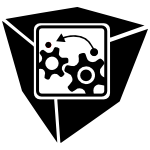 VISSOFT-2005-SchaferM #flexibility #tool support #towards #visualisation
VISSOFT-2005-SchaferM #flexibility #tool support #towards #visualisation- Towards More Flexibility in Software Visualization Tools (TS, MM), pp. 64–69.
 ICEIS-v5-2005-JaklicV #algorithm #documentation #image #preprocessor
ICEIS-v5-2005-JaklicV #algorithm #documentation #image #preprocessor- Two Simple Algorithms for Document Image Preprocessing — Making a Document Scanning Application More User-Friendly (AJ, BV), pp. 116–121.
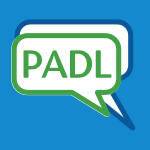 PADL-2005-SaadP #framework #hybrid #logic programming #probability #towards
PADL-2005-SaadP #framework #hybrid #logic programming #probability #towards- Towards a More Practical Hybrid Probabilistic Logic Programming Framework (ES, EP), pp. 67–82.
 RE-2005-BerryDFGHW #question #requirements #why
RE-2005-BerryDFGHW #question #requirements #why- To do or not to do: If the requirements engineering payoff is so good, why aren’t more companies doing it? (DMB, DD, AF, DCG, RH, AW), p. 447.
 COCV-J-2005-HuBGP #optimisation #validation
COCV-J-2005-HuBGP #optimisation #validation- Validating More Loop Optimizations (YH, CWB, BG, AP), pp. 69–84.
 ITiCSE-WGR-2004-Shumba #education #effectiveness #towards
ITiCSE-WGR-2004-Shumba #education #effectiveness #towards- Towards a more effective way of teaching a cybersecurity basics course (RS), pp. 108–111.
 TACAS-2004-GeldenhuysV #algorithm #ltl #on the fly #performance #verification
TACAS-2004-GeldenhuysV #algorithm #ltl #on the fly #performance #verification- Tarjan’s Algorithm Makes On-the-Fly LTL Verification More Efficient (JG, AV), pp. 205–219.
 ICFP-2004-LammelJ #scrap your boilerplate
ICFP-2004-LammelJ #scrap your boilerplate- Scrap more boilerplate: reflection, zips, and generalised casts (RL, SLPJ), pp. 244–255.
 CSCW-2004-YankelovichWRWKP #distributed #effectiveness
CSCW-2004-YankelovichWRWKP #distributed #effectiveness- Meeting central: making distributed meetings more effective (NY, WW, PR, MW, JK, JP), pp. 419–428.
 CIKM-2004-Ramakrishnan #mining
CIKM-2004-Ramakrishnan #mining- The EDAM project: mining mass spectra and more (RR), p. 1.
 ICML-2004-KrauseS
ICML-2004-KrauseS- Leveraging the margin more carefully (NK, YS).
 ICPR-v1-2004-XuWTQ #question #recognition
ICPR-v1-2004-XuWTQ #question #recognition- Depth vs. Intensity: Which is More Important for Face Recognition? (CX, YW, TT, LQ), pp. 342–345.
 ICPR-v2-2004-KherfiBZ #effectiveness #image #retrieval #semantics #visual notation
ICPR-v2-2004-KherfiBZ #effectiveness #image #retrieval #semantics #visual notation- Combining Visual Features with Semantics for a More Effective Image Retrieval (MLK, DB, DZ), pp. 961–964.
 ICSE-2004-Rajan #integration
ICSE-2004-Rajan #integration- One More Step in the Direction of Modularized Integration Concerns (HR), pp. 36–38.
 CAV-2004-AwedhS #bound #model checking #proving
CAV-2004-AwedhS #bound #model checking #proving- Proving More Properties with Bounded Model Checking (MA, FS), pp. 96–108.
 FME-2003-Chalin #effectiveness #ml
FME-2003-Chalin #effectiveness #ml- Improving JML: For a Safer and More Effective Language (PC), pp. 440–461.
 CIKM-2003-WuSC #performance #web
CIKM-2003-WuSC #performance #web- Finding more useful information faster from web search results (YfBW, LS, XC), pp. 568–571.
 ICML-2003-MooreW #learning #network
ICML-2003-MooreW #learning #network- Optimal Reinsertion: A New Search Operator for Accelerated and More Accurate Bayesian Network Structure Learning (AWM, WKW), pp. 552–559.
 GPCE-2003-Tarr #towards
GPCE-2003-Tarr #towards- Towards a More Piece-ful World (PLT), pp. 265–266.
 CSL-2003-Vermeulen #first-order #logic #semantics
CSL-2003-Vermeulen #first-order #logic #semantics- More Computation Power for a Denotational Semantics for First Order Logic (KFMV), pp. 530–543.
 ICLP-2003-LagoonMS #analysis #termination
ICLP-2003-LagoonMS #analysis #termination- Termination Analysis with Types Is More Accurate (VL, FM, PJS), pp. 254–268.
 ASE-2002-OwenMC #finite #modelling #question #what
ASE-2002-OwenMC #finite #modelling #question #what- What Makes Finite-State Models More (or Less) Testable? (DO, TM, BC), pp. 237–240.
 VLDB-2002-LohmanL #named
VLDB-2002-LohmanL #named- SMART: Making DB2 (More) Autonomic (GML, SL), pp. 877–879.
 SAS-2002-VaucheretB #logic programming #performance #precise #source code #type inference
SAS-2002-VaucheretB #logic programming #performance #precise #source code #type inference- More Precise Yet Efficient Type Inference for Logic Programs (CV, FB), pp. 102–116.
 ICFP-2002-Myers #functional #programming language #towards
ICFP-2002-Myers #functional #programming language #towards- Towards more natural functional programming languages (BAM), p. 1.
 ICFP-2002-NeubauerT #higher-order #morphism #polymorphism
ICFP-2002-NeubauerT #higher-order #morphism #polymorphism- Type classes with more higher-order polymorphism (MN, PT), pp. 179–190.
 CHI-2002-AccotZ #interface
CHI-2002-AccotZ #interface- More than dotting the i’s — foundations for crossing-based interfaces (JA, SZ), pp. 73–80.
 CHI-2002-HudsonCKE #quote #research
CHI-2002-HudsonCKE #quote #research- “I’d be overwhelmed, but it’s just one more thing to do”: availability and interruption in research management (JMH, JC, WAK, TE), pp. 97–104.
 SIGIR-2002-DumaisBBLN #question #web
SIGIR-2002-DumaisBBLN #question #web- Web question answering: is more always better? (STD, MB, EB, JJL, AYN), pp. 291–298.
 CADE-2002-SchneckN #approach #scalability
CADE-2002-SchneckN #approach #scalability- A Gradual Approach to a More Trustworthy, Yet Scalable, Proof-Carrying Code (RRS, GCN), pp. 47–62.
 SAT-2002-Bacchus #reasoning #trade-off
SAT-2002-Bacchus #reasoning #trade-off- Exploring the computational tradeoff of more reasoning and less searching (FB), p. 34.
 ICALP-2001-FriedmanG #random #satisfiability
ICALP-2001-FriedmanG #random #satisfiability- Recognizing More Unsatisfiable Random 3-SAT Instances Efficiently (JF, AG), pp. 310–321.
 CHI-2001-VertegaalSVN
CHI-2001-VertegaalSVN- Eye gaze patterns in conversations: there is more the conversational agents than meets the eyes (RV, RS, GCvdV, AN), pp. 301–308.
 QAPL-2001-Fruhwirth #analysis #automation #complexity #concurrent #source code
QAPL-2001-Fruhwirth #analysis #automation #complexity #concurrent #source code- As Time Goes By II: More Automatic Complexity Analysis of Concurrent Rule Programs (TWF), pp. 185–206.
 IJCAR-2001-Luther #syntax
IJCAR-2001-Luther #syntax- More On Implicit Syntax (ML), pp. 386–400.
 HT-2000-Bernstein
HT-2000-Bernstein- More than legible: on links that readers don’t want to follow (MB), pp. 216–217.
 FASE-2000-LuthW #development #tool support
FASE-2000-LuthW #development #tool support- More About TAS and IsaWin — Tools for Formal Program Development (CL, BW), pp. 367–370.
 STOC-2000-GoldsmithS #query
STOC-2000-GoldsmithS #query- More theory revision with queries (extended abstract) (JG, RHS), pp. 441–448.
 STOC-2000-Kilian #theorem
STOC-2000-Kilian #theorem- More general completeness theorems for secure two-party computation (JK), pp. 316–324.
 ICFP-2000-ChakravartyK #parallel #programming
ICFP-2000-ChakravartyK #parallel #programming- More types for nested data parallel programming (MMTC, GK), pp. 94–105.
 ICEIS-2000-RodriguesRH #how #process
ICEIS-2000-RodriguesRH #how #process- How to Make KDD Process More Accessible to Users (MdFR, CR, PRH), pp. 209–216.
 ICML-2000-SchohnC #learning #less is more
ICML-2000-SchohnC #learning #less is more- Less is More: Active Learning with Support Vector Machines (GS, DC), pp. 839–846.
 KDD-2000-PeiH #constraints #mining #question
KDD-2000-PeiH #constraints #mining #question- Can we push more constraints into frequent pattern mining? (JP, JH), pp. 350–354.
 TOOLS-PACIFIC-2000-Ober #modelling #uml
TOOLS-PACIFIC-2000-Ober #modelling #uml- More Meaningful UML Models (IO), pp. 146–157.
 SAC-2000-ChongS
SAC-2000-ChongS- Back to the Basics: A first Class Chalkboard and More (NSTC, MS), pp. 131–136.
 ICSE-2000-OsterweilBEGKM #re-engineering #research #why
ICSE-2000-OsterweilBEGKM #re-engineering #research #why- Why don’t we get more (self?) respect: the positive impact of software engineering research upon practice (LJO, BWB, ME, VG, JK, EFM), p. 660.
 ICSE-2000-Widmaier #maturity #process #question #re-engineering #reliability #state of the art
ICSE-2000-Widmaier #maturity #process #question #re-engineering #reliability #state of the art- Producing more reliable software: mature software engineering process vs. state-of-the-art technology? (JCW), pp. 88–93.
 ASPLOS-2000-DuesterwaldB #less is more #predict #profiling
ASPLOS-2000-DuesterwaldB #less is more #predict #profiling- Software Profiling for Hot Path Prediction: Less is More (ED, VB), pp. 202–211.
 LICS-2000-Reynolds
LICS-2000-Reynolds- More Past Glories (MR), pp. 229–240.
 ICDAR-1999-SarkarN
ICDAR-1999-SarkarN- Heeding More Than the Top Template (PS, GN), pp. 382–385.
 VLDB-1999-ZurekS
VLDB-1999-ZurekS- Datawarehousing Has More Colours Than Just Black & White (TZ, MS), pp. 726–729.
 ESOP-1999-MoggiTBS #ml
ESOP-1999-MoggiTBS #ml- An Idealized MetaML: Simpler, and More Expressive (EM, WT, ZEAB, TS), pp. 193–207.
 DLT-1999-Cassaigne #complexity
DLT-1999-Cassaigne #complexity- Subword complexity and periodicity in two or more dimensions (JC), pp. 14–21.
 DLT-1999-JirickaK #automaton #finite #nondeterminism
DLT-1999-JirickaK #automaton #finite #nondeterminism- Deterministic forgetting planar automata are more powerful than non-deterministic finite-state planar automata (PJ, JK), pp. 71–80.
 FM-v2-1999-GoguenR #algebra
FM-v2-1999-GoguenR #algebra- Hiding More of Hidden Algebra (JAG, GR), pp. 1704–1719.
 FM-v2-1999-LeavensB #specification
FM-v2-1999-LeavensB #specification- Enhancing the Pre- and Postcondition Technique for More Expressive Specifications (GTL, ALB), pp. 1087–1106.
 FM-v2-1999-Merz
FM-v2-1999-Merz- A More Complete TLA (SM), pp. 1226–1244.
 CHI-1999-McDanielM
CHI-1999-McDanielM- Getting More Cut of Programming-by-Demonstration (RGM, BAM), pp. 442–449.
 CHI-1999-SingerHSW #less is more
CHI-1999-SingerHSW #less is more- Tangible Progress: Less is More in Somewire Audio Spaces (AS, DH, LS, SW), pp. 104–111.
 HCI-CCAD-1999-Reijonen
HCI-CCAD-1999-Reijonen- When one is more than twenty one (PR), pp. 558–562.
 HCI-EI-1999-AarasRH
HCI-EI-1999-AarasRH- Can a more neutral position and support of the forearms at the Table top reduce pain for VDU operators. Laboratory and field studies (AA, OR, GH), pp. 51–55.
 HCI-EI-1999-SophianC
HCI-EI-1999-SophianC- A Picture is Worth More Than Two Lines (CS, MEC), pp. 376–380.
 ICSE-1999-BorgidaD #component #information management #towards
ICSE-1999-BorgidaD #component #information management #towards- Adding more “DL” to IDL: Towards More Knowledgeable Component Inter-Operability (AB, PTD), pp. 378–387.
 TAGT-1998-Kuske
TAGT-1998-Kuske- More About Control Conditions for Transformation Units (SK), pp. 323–337.
 KR-1998-GiunchigliaGST #evaluation #logic
KR-1998-GiunchigliaGST #evaluation #logic- More Evaluation of Decision Procedures for Modal Logics (EG, FG, RS, AT), pp. 626–635.
 DAC-1997-KahngT #bound
DAC-1997-KahngT #bound- More Practical Bounded-Skew Clock Routing (ABK, CWAT), pp. 594–599.
 EDTC-1997-Kristof #architecture #bound #effectiveness #idea #self #testing
EDTC-1997-Kristof #architecture #bound #effectiveness #idea #self #testing- Extension of the boundary-scan architecture and new idea of BIST for more effective testing and self-testing of interconnections (AK), p. 630.
 ICDAR-1997-Fateman #documentation
ICDAR-1997-Fateman #documentation- More Versatile Scientific Document (RJF), pp. 1107–1110.
 ICDAR-1997-ShiP #recognition
ICDAR-1997-ShiP #recognition- Font Recognition and Contextual Processing for More Accurate Text Recognition (HS, TP), pp. 39–44.
 SIGIR-1997-Cooper #approximate #how
SIGIR-1997-Cooper #approximate #how- How to Read Less and Know More — Approximate OCR for Thai (DC), pp. 216–225.
 CADE-1997-LoweD #named #proving #theorem proving
CADE-1997-LoweD #named #proving #theorem proving- XBarnacle: Making Theorem Provers More Accessible (HL, DD), pp. 404–407.
 TACAS-1996-GrahlmannB #named #petri net
TACAS-1996-GrahlmannB #named #petri net- PEP — More than a Petri Net Tool (BG, EB), pp. 397–401.
 STOC-1996-Wilson #generative #random
STOC-1996-Wilson #generative #random- Generating Random Spanning Trees More Quickly than the Cover Time (DBW), pp. 296–303.
 CHI-1996-KambaEHSS #using
CHI-1996-KambaEHSS #using- Using Small Screen Space More Efficiently (TK, SAE, TH, TS, PNS), pp. 383–390.
 CHI-1996-VelichkovskyH #human-computer #interactive
CHI-1996-VelichkovskyH #human-computer #interactive- New Technological Windows into Mind: There is More in Eyes and Brains for Human-Computer Interaction (BV, JPH), pp. 496–503.
 LOPSTR-1996-LeuschelS #how #logic programming
LOPSTR-1996-LeuschelS #how #logic programming- Logic Program Specialisation: How to Be More Specific (Abstract) (ML, DDS), p. 58.
 PLILP-1996-LeuschelS #how #logic programming
PLILP-1996-LeuschelS #how #logic programming- Logic Program Specialisation: How To Be More Specific (ML, DDS), pp. 137–151.
 CADE-1996-Nipkow #higher-order #proving
CADE-1996-Nipkow #higher-order #proving- More Church-Rosser Proofs (in Isabelle/HOL) (TN), pp. 733–747.
 LICS-1996-HirstH #complexity #recursion
LICS-1996-HirstH #complexity #recursion- More About Recursive Structures: Descriptive Complexity and Zero-One Laws (TH, DH), pp. 334–347.
 DAC-1995-AlpertY #clustering
DAC-1995-AlpertY #clustering- Spectral Partitioning: The More Eigenvectors, The Better (CJA, SZY), pp. 195–200.
 CSEE-1995-CoyneDGR #approach #case study #education #experience #modelling #re-engineering
CSEE-1995-CoyneDGR #approach #case study #education #experience #modelling #re-engineering- Teaching More Comprehensive Model-Based Software Engineering: Experience with Objectory’s Use Case Approach (RFC, AHD, BB, DR), pp. 339–374.
 STOC-1995-BealsNT #complexity
STOC-1995-BealsNT #complexity- More on the complexity of negation-limited circuits (RB, TN, KT), pp. 585–595.
 KBSE-1994-JengC #approach #component #formal method #reuse
KBSE-1994-JengC #approach #component #formal method #reuse- A Formal Approach to Reusing More General Components (JJJ, BHCC), pp. 90–97.
 HT-ECHT-1994-HaakeNS #flexibility #hypermedia #requirements
HT-ECHT-1994-HaakeNS #flexibility #hypermedia #requirements- Coexistence and Transformation of Informal and Formal Structures: Requirements for More Flexible Hypermedia Systems (JMH, CN, NAS), pp. 1–12.
 PODS-1994-CalvaneseL #object-oriented
PODS-1994-CalvaneseL #object-oriented- Making Object-Oriented Schemas More Expressive (DC, ML), pp. 243–254.
 FME-1994-BowenH #formal method
FME-1994-BowenH #formal method- Seven More Myths of Formal Methods (JPB, MGH), pp. 105–117.
 LFP-1994-Fradet #garbage collection
LFP-1994-Fradet #garbage collection- Collecting More Garbage (PF), pp. 24–33.
 TRI-Ada-1994-BarbaschE #ada #debugging
TRI-Ada-1994-BarbaschE #ada #debugging- Always One More Bug: Applying AdaWise to Improve Ada Code (CB, DE), pp. 228–235.
 TRI-Ada-1994-GreeneL #cpu #embedded #migration
TRI-Ada-1994-GreeneL #cpu #embedded #migration- Embedded CPU Target Migration, Doing More With Less (RG, GL), pp. 429–436.
 LOPSTR-1994-BossiE #semantics #source code
LOPSTR-1994-BossiE #semantics #source code- More on Unfold/Fold Transformations of Normal Programs: Preservation of Fitting’s Semantics (AB, SE), pp. 311–331.
 KBSE-1993-BailesCGP #execution #named #specification
KBSE-1993-BailesCGP #execution #named #specification- GRIT — An Extended Refine for More Executable Specifications (PB, MC, MG, IP), p. 19.
 HT-1993-LucarellaPZ #multi #named #retrieval
HT-1993-LucarellaPZ #multi #named #retrieval- MORE: Multimedia Object Retrieval Environment (DL, SP, AZ), pp. 39–50.
 STOC-1993-NisanZ #simulation
STOC-1993-NisanZ #simulation- More deterministic simulation in logspace (NN, DZ), pp. 235–244.
 ICALP-1993-Blum #approach #reliability #source code
ICALP-1993-Blum #approach #reliability #source code- Program Result Checking: A New Approach to Making Programs More Reliable (MB), pp. 1–14.
 SEKE-1993-YoshiuraY #logic #specification
SEKE-1993-YoshiuraY #logic #specification- More Expressive Temporal Logic for Specifications (NY, NY), pp. 363–366.
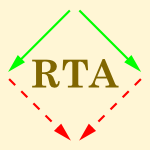 RTA-1993-DershowitzJK #problem
RTA-1993-DershowitzJK #problem- More Problems in Rewriting (ND, JPJ, JWK), pp. 468–487.
 CHI-1992-HargreavesRHMKL #towards
CHI-1992-HargreavesRHMKL #towards- Toward a more humane keyboard (WH, DR, NH, RM, KK, JL), pp. 365–368.
 CHI-1992-WhartonBJF #case study #experience #recommendation #user interface
CHI-1992-WhartonBJF #case study #experience #recommendation #user interface- Applying cognitive walkthroughs to more complex user interfaces: experiences, issues, and recommendations (CW, JB, RJ, MF), pp. 381–388.
 ML-1992-AlmuallimD #concept #learning #on the
ML-1992-AlmuallimD #concept #learning #on the- On Learning More Concepts (HA, TGD), pp. 11–19.
 LOPSTR-1992-Demoen #on the #performance #prolog
LOPSTR-1992-Demoen #on the #performance #prolog- On the Transformation of a Prolog Program to a More Efficient Binary Program (BD), pp. 242–252.
 CADE-1992-VershininR #logic #nondeterminism
CADE-1992-VershininR #logic #nondeterminism- One More Logic with Uncertainty and Resolution Principle for it (KV, IR), pp. 663–667.
 DAC-1991-BurchCL #model checking #representation
DAC-1991-BurchCL #model checking #representation- Representing Circuits More Efficiently in Symbolic Model Checking (JRB, EMC, DEL), pp. 403–407.
 ML-1990-Valtorta #complexity #knowledge base #network #refinement
ML-1990-Valtorta #complexity #knowledge base #network #refinement- More Results on the Complexity of Knowledge Base Refinement: Belief Networks (MV), pp. 419–426.
 NACLP-1990-Bol #performance #towards
NACLP-1990-Bol #performance #towards- Towards More Efficient Loop Checks (RNB), pp. 465–479.
 PODS-1989-Wang #maintenance #question
PODS-1989-Wang #maintenance #question- Can Constant-time Maintainability Be More Practical? (KW), pp. 120–127.
 VLDB-1989-Creasy #concept #named
VLDB-1989-Creasy #concept #named- ENIAM: A More Complete Conceptual Schema Language (PNC), pp. 107–114.
 DAC-1988-CongW #how
DAC-1988-CongW #how- How to Obtain More Compactable Channel Routing Solutions (JC, DFW), pp. 663–666.
 STOC-1988-LuekerM #analysis
STOC-1988-LuekerM #analysis- More Analysis of Double Hashing (GSL, MM), pp. 354–359.
 CSCW-1988-Mackay #communication #email
CSCW-1988-Mackay #communication #email- More than just a Communication System: Diversity in the Use of Electronic Mail (WEM), pp. 344–353.
 ECOOP-1988-KnudsenM #education #object-oriented #programming language
ECOOP-1988-KnudsenM #education #object-oriented #programming language- Teaching Object-Oriented Programming Is More than Teaching Object-Oriented Programming Languages (JLK, OLM), pp. 21–40.
 VLDB-1987-LacroixL #query
VLDB-1987-LacroixL #query- Preferences; Putting More Knowledge into Queries (ML, PL), pp. 217–225.
 HCI-CE-1987-Fischer
HCI-CE-1987-Fischer- Making Computers More Useful and More Usable (GF), pp. 97–104.
 ICALP-1986-Schnorr #algorithm #performance #reduction
ICALP-1986-Schnorr #algorithm #performance #reduction- A More Efficient Algorithm for Lattice Basis Reduction (Extended Abstract) (CPS), pp. 359–369.
 ICALP-1986-Wagner
ICALP-1986-Wagner- More Complicated Questions About Maxima and Minima, and Some Closures of NP (KWW), pp. 434–443.
 LFP-1984-Saint-James #performance #recursion
LFP-1984-Saint-James #performance #recursion- Recursion is More Efficient than Iteration (ESJ), pp. 228–234.
 ICSE-1982-GreenspanMB #requirements #specification
ICSE-1982-GreenspanMB #requirements #specification- Capturing More World Knowledge in the Requirements Specification (SJG, JM, AB), pp. 225–235.
 ILPC-1982-Bruynooghe82a #prolog #reliability #source code
ILPC-1982-Bruynooghe82a #prolog #reliability #source code- Adding Redundancy to Obtain more Reliable and Readable Prolog Programs (MB), pp. 129–133.
 SDCG-1980-ThatcherWW #compilation #proving
SDCG-1980-ThatcherWW #compilation #proving- More on advice on structuring compilers and proving them correct (JWT, EGW, JBW), pp. 165–188.
 SIGMOD-1979-Codd #database #relational
SIGMOD-1979-Codd #database #relational- Extending the Data Base Relational Model to Capture More Meaning (Abstract) (EFC), p. 161.
 VLDB-1979-Janas #towards #user interface
VLDB-1979-Janas #towards #user interface- Towards more Informative User Interfaces (JMJ), pp. 17–23.
 ICALP-1979-ThatcherWW #compilation #proving
ICALP-1979-ThatcherWW #compilation #proving- More on Advice on Structuring Compilers and Proving Them Correct (JWT, EGW, JBW), pp. 596–615.
 ICALP-1978-PriceW #stack
ICALP-1978-PriceW #stack- States Can Sometimes Do More Than Stack Symbols in PDA’s (JKP, DW), pp. 353–362.
 WICSA-2015-NaabBLHEMCK #architecture #case study #design #ecosystem #experience #mobile #prototype #scalability #why
WICSA-2015-NaabBLHEMCK #architecture #case study #design #ecosystem #experience #mobile #prototype #scalability #why CASE-2015-GoeckeE #automation #robust #towards
CASE-2015-GoeckeE #automation #robust #towards ICSME-2015-XiaLWY #analysis #bibliography #recommendation
ICSME-2015-XiaLWY #analysis #bibliography #recommendation MSR-2015-OrtuADTMT #effectiveness #empirical
MSR-2015-OrtuADTMT #effectiveness #empirical CIAA-2015-GruberHJ #automaton #finite #nondeterminism
CIAA-2015-GruberHJ #automaton #finite #nondeterminism LATA-2015-BoichutCR #approximate #precise #towards
LATA-2015-BoichutCR #approximate #precise #towards CSCW-2015-SiangliulueAGD #collaboration #scalability #towards
CSCW-2015-SiangliulueAGD #collaboration #scalability #towards DUXU-DD-2015-WuC #effectiveness
DUXU-DD-2015-WuC #effectiveness KDD-2015-FeldmanT #approximate #big data #constraints #matrix
KDD-2015-FeldmanT #approximate #big data #constraints #matrix SEKE-2015-ChenZWQJW #api #mining #protocol
SEKE-2015-ChenZWQJW #api #mining #protocol REFSQ-2015-LiHT #case study #formal method #performance #requirements #towards
REFSQ-2015-LiHT #case study #formal method #performance #requirements #towards SPLC-2015-GreggSC #product line
SPLC-2015-GreggSC #product line ASPLOS-2015-PangDL #less is more
ASPLOS-2015-PangDL #less is more PPoPP-2015-Gramoli #algorithm #concurrent #impact analysis
PPoPP-2015-Gramoli #algorithm #concurrent #impact analysis SOSP-2015-TsaiZRJZP #file system #how
SOSP-2015-TsaiZRJZP #file system #how CAV-2015-BacchusK #satisfiability #set #using
CAV-2015-BacchusK #satisfiability #set #using WICSA-2014-KnodelN #architecture #evaluation #industrial
WICSA-2014-KnodelN #architecture #evaluation #industrial DATE-2014-HeinigDHMWHGBKR #integration
DATE-2014-HeinigDHMWHGBKR #integration HT-2014-AbbasiZTL #network #social
HT-2014-AbbasiZTL #network #social PODS-2014-AmelootKNZ #declarative #fine-grained #network
PODS-2014-AmelootKNZ #declarative #fine-grained #network VLDB-2015-ThenKCHPK0V14 #graph #multi #performance #traversal
VLDB-2015-ThenKCHPK0V14 #graph #multi #performance #traversal TACAS-2014-HerreraWP #network #query #reduction
TACAS-2014-HerreraWP #network #query #reduction TACAS-2014-SlabyS #contest #precise #slicing
TACAS-2014-SlabyS #contest #precise #slicing CSMR-WCRE-2014-KnodelN #architecture #industrial
CSMR-WCRE-2014-KnodelN #architecture #industrial CSMR-WCRE-2014-XiaFLCW #behaviour #learning #multi #towards
CSMR-WCRE-2014-XiaFLCW #behaviour #learning #multi #towards ICPC-2014-ZhouXLTW #api #categorisation #towards
ICPC-2014-ZhouXLTW #api #categorisation #towards STOC-2014-SahaiW #encryption #how #obfuscation
STOC-2014-SahaiW #encryption #how #obfuscation AFL-2014-HolzerJ #automaton #product line #regular expression
AFL-2014-HolzerJ #automaton #product line #regular expression ICALP-v2-2014-KosowskiP #case study #difference
ICALP-v2-2014-KosowskiP #case study #difference SEFM-2014-HusterHERBKR #flexibility #invariant #specification
SEFM-2014-HusterHERBKR #flexibility #invariant #specification ICFP-2014-Fisher #formal method #using
ICFP-2014-Fisher #formal method #using ICFP-2014-StansiferW #flexibility #named #programming
ICFP-2014-StansiferW #flexibility #named #programming ICFP-2014-Winograd-CortH #first-order #how
ICFP-2014-Winograd-CortH #first-order #how CHI-2014-BakhshiSG
CHI-2014-BakhshiSG CHI-2014-BurszteinMFBMJ
CHI-2014-BurszteinMFBMJ CHI-2014-FerreiraFK #visualisation
CHI-2014-FerreiraFK #visualisation CHI-2014-WeigelMS #comprehension #how #mobile #people
CHI-2014-WeigelMS #comprehension #how #mobile #people HCI-AS-2014-Phillips #mobile
HCI-AS-2014-Phillips #mobile LCT-TRE-2014-ShimizuO #effectiveness #learning #question
LCT-TRE-2014-ShimizuO #effectiveness #learning #question ECIR-2014-BastH #information management
ECIR-2014-BastH #information management ICPR-2014-SlitiHBA #analysis #robust #using
ICPR-2014-SlitiHBA #analysis #robust #using SIGIR-2014-WanZ #named #summary
SIGIR-2014-WanZ #named #summary SKY-2014-OsetinskyY #abstraction #case study #effectiveness #legacy #using
SKY-2014-OsetinskyY #abstraction #case study #effectiveness #legacy #using ECMFA-2014-DouBB #named #ocl
ECMFA-2014-DouBB #named #ocl RE-2014-Anton #privacy #security
RE-2014-Anton #privacy #security ICSE-2014-KleinMAH #named #robust
ICSE-2014-KleinMAH #named #robust ICSE-2014-LiTH #energy #performance #smarttech #web
ICSE-2014-LiTH #energy #performance #smarttech #web OSDI-2014-MuCZLL #concurrent #distributed #transaction
OSDI-2014-MuCZLL #concurrent #distributed #transaction CBSE-2013-GortonLLED #case study #component #experience #using
CBSE-2013-GortonLLED #case study #component #experience #using SIGMOD-2013-WoodsTA #performance
SIGMOD-2013-WoodsTA #performance VLDB-2013-RamanABCKKLLLLMMPSSSSZ
VLDB-2013-RamanABCKKLLLLMMPSSSSZ VLDB-2014-YuLZCP13 #effectiveness
VLDB-2014-YuLZCP13 #effectiveness MSR-2013-AlipourHS #approach #debugging #detection #towards
MSR-2013-AlipourHS #approach #debugging #detection #towards CIAA-2013-HolzerJ #algorithm #robust
CIAA-2013-HolzerJ #algorithm #robust LATA-2013-HutagalungLL #automaton #game studies #simulation
LATA-2013-HutagalungLL #automaton #game studies #simulation CHI-2013-GomesNV13a #case study #flexibility #named #smarttech
CHI-2013-GomesNV13a #case study #flexibility #named #smarttech CHI-2013-KimSLKL13a #named
CHI-2013-KimSLKL13a #named CHI-2013-KnijnenburgKJ #privacy #question
CHI-2013-KnijnenburgKJ #privacy #question CHI-2013-LaseckiMB #crowdsourcing #effectiveness #realtime
CHI-2013-LaseckiMB #crowdsourcing #effectiveness #realtime DUXU-WM-2013-ShenP #performance
DUXU-WM-2013-ShenP #performance HIMI-LCCB-2013-LindholmBN #interactive
HIMI-LCCB-2013-LindholmBN #interactive ICML-c3-2013-SchaulZL #learning
ICML-c3-2013-SchaulZL #learning KDIR-KMIS-2013-DowGABP #information management
KDIR-KMIS-2013-DowGABP #information management KEOD-2013-Surynek #bibliography #collaboration #web
KEOD-2013-Surynek #bibliography #collaboration #web SAC-2013-HunnyZW #adaptation #named
SAC-2013-HunnyZW #adaptation #named SOSP-2013-MoraruAK
SOSP-2013-MoraruAK DAC-2012-LiANSVZ #design #physics #predict
DAC-2012-LiANSVZ #design #physics #predict DocEng-2012-MancillaP #named
DocEng-2012-MancillaP #named VLDB-2013-DongSS12 #integration #less is more
VLDB-2013-DongSS12 #integration #less is more TACAS-2012-BabiakKRS #automaton #ltl #performance
TACAS-2012-BabiakKRS #automaton #ltl #performance WRLA-2012-ArusoaieSER #interactive #maude
WRLA-2012-ArusoaieSER #interactive #maude ICSM-2012-QiML #automation #performance #scalability #source code #using
ICSM-2012-QiML #automation #performance #scalability #source code #using CHI-2012-KratzMS #gesture
CHI-2012-KratzMS #gesture CHI-2012-KuleszaSBK #personalisation
CHI-2012-KuleszaSBK #personalisation CHI-2012-MerrittM
CHI-2012-MerrittM CHI-2012-TangHS #social
CHI-2012-TangHS #social CIKM-2012-ZhuGCL #behaviour #mining #query #recommendation
CIKM-2012-ZhuGCL #behaviour #mining #query #recommendation ECIR-2012-NeumayerBN12a #effectiveness #semantics
ECIR-2012-NeumayerBN12a #effectiveness #semantics ECIR-2012-ToramanC #categorisation #performance
ECIR-2012-ToramanC #categorisation #performance KDD-2012-GrosskreutzPR
KDD-2012-GrosskreutzPR KMIS-2012-RakthinCC #effectiveness
KMIS-2012-RakthinCC #effectiveness RecSys-2012-ShiKBLOH #collaboration #learning #named #rank
RecSys-2012-ShiKBLOH #collaboration #learning #named #rank SEKE-2012-CookN #aspect-oriented #concept #programming #towards
SEKE-2012-CookN #aspect-oriented #concept #programming #towards SIGIR-2012-GarkavijsTK
SIGIR-2012-GarkavijsTK LOPSTR-2012-NishidaV #term rewriting
LOPSTR-2012-NishidaV #term rewriting REFSQ-2012-GenonCTHM #semantics #syntax #towards #visual notation
REFSQ-2012-GenonCTHM #semantics #syntax #towards #visual notation SAC-2012-MatsubaraMYUIK #algorithm #named #performance #re-engineering
SAC-2012-MatsubaraMYUIK #algorithm #named #performance #re-engineering ICSE-2012-ZhouZL #debugging #information retrieval #locality
ICSE-2012-ZhouZL #debugging #information retrieval #locality PLEASE-2012-BoucherAHPAH #perspective #re-engineering #reliability #towards
PLEASE-2012-BoucherAHPAH #perspective #re-engineering #reliability #towards SAT-2012-LiffitonM #constraints #for free
SAT-2012-LiffitonM #constraints #for free VMCAI-2012-Nipkow #education #proving #semantics
VMCAI-2012-Nipkow #education #proving #semantics ASE-2011-SunLKJ #debugging #retrieval #towards
ASE-2011-SunLKJ #debugging #retrieval #towards ASE-2011-WeiRFPHSNM #contract #fault #testing
ASE-2011-WeiRFPHSNM #contract #fault #testing SIGMOD-2011-TekleL #datalog #performance #query #set
SIGMOD-2011-TekleL #datalog #performance #query #set CIAA-2011-LonatiP #2d #automaton #towards
CIAA-2011-LonatiP #2d #automaton #towards CHI-2011-LucaFMSHKH #internet #security #visualisation
CHI-2011-LucaFMSHKH #internet #security #visualisation CHI-2011-ReederBCRV #usability
CHI-2011-ReederBCRV #usability CHI-2011-VihavainenMSCC #collaboration #human-computer #mobile #music #social #video
CHI-2011-VihavainenMSCC #collaboration #human-computer #mobile #music #social #video CHI-2011-YeeDYN
CHI-2011-YeeDYN DUXU-v1-2011-ChampneyKS #design #performance #process
DUXU-v1-2011-ChampneyKS #design #performance #process HCI-ITE-2011-HipplerKLPKJ #empirical
HCI-ITE-2011-HipplerKLPKJ #empirical IDGD-2011-Gould #question
IDGD-2011-Gould #question CIKM-2011-PCK #problem #repository #trade-off
CIKM-2011-PCK #problem #repository #trade-off CIKM-2011-WahabzadaKPB #performance #scheduling
CIKM-2011-WahabzadaKPB #performance #scheduling ECIR-2011-KoolenK #effectiveness #question #retrieval #semantics
ECIR-2011-KoolenK #effectiveness #question #retrieval #semantics KDD-2011-McCue #security
KDD-2011-McCue #security RecSys-2011-CamposDS #evaluation #matrix #predict #recommendation #testing #towards
RecSys-2011-CamposDS #evaluation #matrix #predict #recommendation #testing #towards Onward-2011-CukierY #research
Onward-2011-CukierY #research OOPSLA-2011-DavidC #precise #specification #verification
OOPSLA-2011-DavidC #precise #specification #verification GPCE-2011-ArnoldusBS #less is more #metalanguage
GPCE-2011-ArnoldusBS #less is more #metalanguage POPL-2011-DimoulasFFF #contract
POPL-2011-DimoulasFFF #contract ICSE-2011-NohrerRE #consistency #effectiveness #nondeterminism
ICSE-2011-NohrerRE #consistency #effectiveness #nondeterminism LDTA-2011-MametjanovWL #precise #type system
LDTA-2011-MametjanovWL #precise #type system VMCAI-2011-AlbertGM #cost analysis #precise
VMCAI-2011-AlbertGM #cost analysis #precise VLDB-2010-ChaytorW #privacy
VLDB-2010-ChaytorW #privacy FASE-2010-BacchelliDL #fault #question
FASE-2010-BacchelliDL #fault #question PEPM-2010-HoldermansH #strict
PEPM-2010-HoldermansH #strict ILC-2010-RideauG #coordination #evolution
ILC-2010-RideauG #coordination #evolution CHI-2010-AulaKG #behaviour #how #question
CHI-2010-AulaKG #behaviour #how #question CHI-2010-SaponasTMTL #interface
CHI-2010-SaponasTMTL #interface ICEIS-ISAS-2010-Tagg #concept #modelling #ontology #towards
ICEIS-ISAS-2010-Tagg #concept #modelling #ontology #towards ICPR-2010-AdamsWDMBG #feature model #less is more #recognition
ICPR-2010-AdamsWDMBG #feature model #less is more #recognition ICPR-2010-ForsbergAK #estimation #image #parallel
ICPR-2010-ForsbergAK #estimation #image #parallel ICPR-2010-GuoC10a #constraints
ICPR-2010-GuoC10a #constraints ICPR-2010-KinnunenKLLK #categorisation #random #set #visual notation
ICPR-2010-KinnunenKLLK #categorisation #random #set #visual notation ICPR-2010-Martin-FelezMS #gender #recognition #representation #towards
ICPR-2010-Martin-FelezMS #gender #recognition #representation #towards KDD-2010-TangAOM #empirical #framework #performance
KDD-2010-TangAOM #empirical #framework #performance SEKE-2010-AlhassanCB #analysis #fault #network #people #social
SEKE-2010-AlhassanCB #analysis #fault #network #people #social SEKE-2010-ZhangZH #model checking #precise
SEKE-2010-ZhangZH #model checking #precise SIGIR-2010-YueGCZJ #evaluation #learning #retrieval #statistics
SIGIR-2010-YueGCZJ #evaluation #learning #retrieval #statistics REFSQ-2010-BrillSK #case study #question #requirements
REFSQ-2010-BrillSK #case study #question #requirements CC-2010-BenabderrahmanePCB
CC-2010-BenabderrahmanePCB ICTSS-2010-FalconeFJMM
ICTSS-2010-FalconeFJMM DAC-2009-PlishkerSB #data flow #effectiveness #scheduling
DAC-2009-PlishkerSB #data flow #effectiveness #scheduling ITiCSE-2009-Gal-EzerSZ #gender
ITiCSE-2009-Gal-EzerSZ #gender ICPC-2009-PopescuGM #analysis #dependence #precise
ICPC-2009-PopescuGM #analysis #dependence #precise SEFM-2009-Chalin #verification
SEFM-2009-Chalin #verification CHI-2009-NguyenC #video
CHI-2009-NguyenC #video DHM-2009-Wang #problem #re-engineering
DHM-2009-Wang #problem #re-engineering ICML-2009-VarmaB #kernel #learning #multi #performance
ICML-2009-VarmaB #kernel #learning #multi #performance RecSys-2009-PilaszyT #metadata #recommendation
RecSys-2009-PilaszyT #metadata #recommendation SIGIR-2009-HinneKRVWH
SIGIR-2009-HinneKRVWH SIGIR-2009-OulasvirtaHS
SIGIR-2009-OulasvirtaHS OOPSLA-2009-InoueN #hardware #how #java #monitoring #performance #virtual machine
OOPSLA-2009-InoueN #hardware #how #java #monitoring #performance #virtual machine SAC-2009-EbraertVV #flexibility #reuse
SAC-2009-EbraertVV #flexibility #reuse SAC-2009-MlynkovaN #towards
SAC-2009-MlynkovaN #towards ICLP-2009-LierlerL #decidability #source code
ICLP-2009-LierlerL #decidability #source code VMCAI-2009-LavironL #approach #linear #named #scalability
VMCAI-2009-LavironL #approach #linear #named #scalability DAC-2008-FeldmannA #approach #modelling #physics #towards
DAC-2008-FeldmannA #approach #modelling #physics #towards DAC-2008-Vucurevich #3d
DAC-2008-Vucurevich #3d SIGMOD-2008-TataL #keyword #named
SIGMOD-2008-TataL #keyword #named CSEET-2008-Epstein #agile #how #process #student
CSEET-2008-Epstein #agile #how #process #student ICSM-2008-SilvaDV #robust
ICSM-2008-SilvaDV #robust PASTE-2008-JashkiZB #impact analysis #performance #towards
PASTE-2008-JashkiZB #impact analysis #performance #towards SCAM-2008-Krinke #question
SCAM-2008-Krinke #question DLT-2008-GeffertMP #automaton #regular expression #representation
DLT-2008-GeffertMP #automaton #regular expression #representation CHI-2008-MarkGK #cost analysis
CHI-2008-MarkGK #cost analysis EDOC-2008-Czarski #enterprise #internet
EDOC-2008-Czarski #enterprise #internet ICPR-2008-BarratT #effectiveness #image #network #retrieval #semantics #using #visual notation
ICPR-2008-BarratT #effectiveness #image #network #retrieval #semantics #using #visual notation ICPR-2008-ZhangWHJG #image
ICPR-2008-ZhangWHJG #image SIGIR-2008-Sanderson #ambiguity #query
SIGIR-2008-Sanderson #ambiguity #query SAC-2008-AlmeidaRTG #word
SAC-2008-AlmeidaRTG #word ICST-2008-KaplanKPSWY #approach #consistency #generative #less is more #modelling #testing #uml
ICST-2008-KaplanKPSWY #approach #consistency #generative #less is more #modelling #testing #uml SAT-2008-Marques-SilvaM #algorithm #effectiveness #satisfiability #towards
SAT-2008-Marques-SilvaM #algorithm #effectiveness #satisfiability #towards DAC-2007-Hiller
DAC-2007-Hiller DAC-2007-MarescauxC
DAC-2007-MarescauxC DATE-2007-Furuyama #challenge #mobile #question
DATE-2007-Furuyama #challenge #mobile #question FASE-2007-BachFS #eclipse #plugin #programming
FASE-2007-BachFS #eclipse #plugin #programming PASTE-2007-HovemeyerP #debugging #null #pointer
PASTE-2007-HovemeyerP #debugging #null #pointer STOC-2007-Chan #algorithm #graph
STOC-2007-Chan #algorithm #graph CHI-2007-DahlbackWNA #interface #similarity #speech
CHI-2007-DahlbackWNA #interface #similarity #speech DHM-2007-SadasivanG #question
DHM-2007-SadasivanG #question HCI-AS-2007-HarrisonP #design #experience #usability #web
HCI-AS-2007-HarrisonP #design #experience #usability #web HCI-AS-2007-LiuLS #behaviour #comprehension #design #game studies #online #what
HCI-AS-2007-LiuLS #behaviour #comprehension #design #game studies #online #what HCI-IDU-2007-HwangS #detection #problem #usability #what
HCI-IDU-2007-HwangS #detection #problem #usability #what HCI-IPT-2007-BartneckAK #interface #rating
HCI-IPT-2007-BartneckAK #interface #rating HCI-MIE-2007-GratchWOLMWM #question
HCI-MIE-2007-GratchWOLMWM #question HIMI-IIE-2007-RheeCB #approach #performance #process
HIMI-IIE-2007-RheeCB #approach #performance #process CAiSE-2007-EnglebertH #automation #tool support #towards
CAiSE-2007-EnglebertH #automation #tool support #towards CAiSE-2007-ZachosMZJ #requirements #web #web service
CAiSE-2007-ZachosMZJ #requirements #web #web service CIKM-2007-SarmentoJRO #quote
CIKM-2007-SarmentoJRO #quote ICML-2007-RakotomamonjyBCG #kernel #learning #multi #performance
ICML-2007-RakotomamonjyBCG #kernel #learning #multi #performance SEKE-2007-Fredrick #agile #development #implementation
SEKE-2007-Fredrick #agile #development #implementation SIGIR-2007-WicksG #parallel #performance #rank
SIGIR-2007-WicksG #parallel #performance #rank ECOOP-2007-CliftonLN #aspect-oriented #effectiveness #named #reasoning
ECOOP-2007-CliftonLN #aspect-oriented #effectiveness #named #reasoning SAC-2007-KassabL #analysis #effectiveness #personalisation #towards
SAC-2007-KassabL #analysis #effectiveness #personalisation #towards ISSTA-2007-Koster #consistency #quality #using
ISSTA-2007-Koster #consistency #quality #using VMCAI-2007-FecherH #abstraction #precise
VMCAI-2007-FecherH #abstraction #precise HT-2006-Zhang #wiki
HT-2006-Zhang #wiki PODS-2006-LeeT #performance
PODS-2006-LeeT #performance FoSSaCS-2006-Cao #bisimulation #higher-order #π-calculus
FoSSaCS-2006-Cao #bisimulation #higher-order #π-calculus KR-2006-HorrocksKS
KR-2006-HorrocksKS SIGIR-2006-BastW #performance
SIGIR-2006-BastW #performance SIGIR-2006-ChenK #documentation #less is more #modelling #probability
SIGIR-2006-ChenK #documentation #less is more #modelling #probability RE-2006-Cleland-Huang #how #question #requirements #traceability
RE-2006-Cleland-Huang #how #question #requirements #traceability CAV-2006-KrcalY #automaton #communication #verification
CAV-2006-KrcalY #automaton #communication #verification LICS-2006-ShohamG #abstraction #precise
LICS-2006-ShohamG #abstraction #precise DATE-2005-MellorWM #uml #why
DATE-2005-MellorWM #uml #why SIGMOD-2005-BoulosDMMRS #named #using
SIGMOD-2005-BoulosDMMRS #named #using ITiCSE-2005-GellerS #c# #dot-net
ITiCSE-2005-GellerS #c# #dot-net VISSOFT-2005-SchaferM #flexibility #tool support #towards #visualisation
VISSOFT-2005-SchaferM #flexibility #tool support #towards #visualisation ICEIS-v5-2005-JaklicV #algorithm #documentation #image #preprocessor
ICEIS-v5-2005-JaklicV #algorithm #documentation #image #preprocessor PADL-2005-SaadP #framework #hybrid #logic programming #probability #towards
PADL-2005-SaadP #framework #hybrid #logic programming #probability #towards RE-2005-BerryDFGHW #question #requirements #why
RE-2005-BerryDFGHW #question #requirements #why COCV-J-2005-HuBGP #optimisation #validation
COCV-J-2005-HuBGP #optimisation #validation ITiCSE-WGR-2004-Shumba #education #effectiveness #towards
ITiCSE-WGR-2004-Shumba #education #effectiveness #towards TACAS-2004-GeldenhuysV #algorithm #ltl #on the fly #performance #verification
TACAS-2004-GeldenhuysV #algorithm #ltl #on the fly #performance #verification ICFP-2004-LammelJ #scrap your boilerplate
ICFP-2004-LammelJ #scrap your boilerplate CSCW-2004-YankelovichWRWKP #distributed #effectiveness
CSCW-2004-YankelovichWRWKP #distributed #effectiveness CIKM-2004-Ramakrishnan #mining
CIKM-2004-Ramakrishnan #mining ICML-2004-KrauseS
ICML-2004-KrauseS ICPR-v1-2004-XuWTQ #question #recognition
ICPR-v1-2004-XuWTQ #question #recognition ICPR-v2-2004-KherfiBZ #effectiveness #image #retrieval #semantics #visual notation
ICPR-v2-2004-KherfiBZ #effectiveness #image #retrieval #semantics #visual notation ICSE-2004-Rajan #integration
ICSE-2004-Rajan #integration CAV-2004-AwedhS #bound #model checking #proving
CAV-2004-AwedhS #bound #model checking #proving FME-2003-Chalin #effectiveness #ml
FME-2003-Chalin #effectiveness #ml CIKM-2003-WuSC #performance #web
CIKM-2003-WuSC #performance #web ICML-2003-MooreW #learning #network
ICML-2003-MooreW #learning #network GPCE-2003-Tarr #towards
GPCE-2003-Tarr #towards CSL-2003-Vermeulen #first-order #logic #semantics
CSL-2003-Vermeulen #first-order #logic #semantics ICLP-2003-LagoonMS #analysis #termination
ICLP-2003-LagoonMS #analysis #termination ASE-2002-OwenMC #finite #modelling #question #what
ASE-2002-OwenMC #finite #modelling #question #what VLDB-2002-LohmanL #named
VLDB-2002-LohmanL #named SAS-2002-VaucheretB #logic programming #performance #precise #source code #type inference
SAS-2002-VaucheretB #logic programming #performance #precise #source code #type inference ICFP-2002-Myers #functional #programming language #towards
ICFP-2002-Myers #functional #programming language #towards ICFP-2002-NeubauerT #higher-order #morphism #polymorphism
ICFP-2002-NeubauerT #higher-order #morphism #polymorphism CHI-2002-AccotZ #interface
CHI-2002-AccotZ #interface CHI-2002-HudsonCKE #quote #research
CHI-2002-HudsonCKE #quote #research SIGIR-2002-DumaisBBLN #question #web
SIGIR-2002-DumaisBBLN #question #web CADE-2002-SchneckN #approach #scalability
CADE-2002-SchneckN #approach #scalability SAT-2002-Bacchus #reasoning #trade-off
SAT-2002-Bacchus #reasoning #trade-off ICALP-2001-FriedmanG #random #satisfiability
ICALP-2001-FriedmanG #random #satisfiability CHI-2001-VertegaalSVN
CHI-2001-VertegaalSVN QAPL-2001-Fruhwirth #analysis #automation #complexity #concurrent #source code
QAPL-2001-Fruhwirth #analysis #automation #complexity #concurrent #source code IJCAR-2001-Luther #syntax
IJCAR-2001-Luther #syntax HT-2000-Bernstein
HT-2000-Bernstein FASE-2000-LuthW #development #tool support
FASE-2000-LuthW #development #tool support STOC-2000-GoldsmithS #query
STOC-2000-GoldsmithS #query STOC-2000-Kilian #theorem
STOC-2000-Kilian #theorem ICFP-2000-ChakravartyK #parallel #programming
ICFP-2000-ChakravartyK #parallel #programming ICEIS-2000-RodriguesRH #how #process
ICEIS-2000-RodriguesRH #how #process ICML-2000-SchohnC #learning #less is more
ICML-2000-SchohnC #learning #less is more KDD-2000-PeiH #constraints #mining #question
KDD-2000-PeiH #constraints #mining #question TOOLS-PACIFIC-2000-Ober #modelling #uml
TOOLS-PACIFIC-2000-Ober #modelling #uml SAC-2000-ChongS
SAC-2000-ChongS ICSE-2000-OsterweilBEGKM #re-engineering #research #why
ICSE-2000-OsterweilBEGKM #re-engineering #research #why ICSE-2000-Widmaier #maturity #process #question #re-engineering #reliability #state of the art
ICSE-2000-Widmaier #maturity #process #question #re-engineering #reliability #state of the art ASPLOS-2000-DuesterwaldB #less is more #predict #profiling
ASPLOS-2000-DuesterwaldB #less is more #predict #profiling LICS-2000-Reynolds
LICS-2000-Reynolds ICDAR-1999-SarkarN
ICDAR-1999-SarkarN VLDB-1999-ZurekS
VLDB-1999-ZurekS ESOP-1999-MoggiTBS #ml
ESOP-1999-MoggiTBS #ml DLT-1999-Cassaigne #complexity
DLT-1999-Cassaigne #complexity DLT-1999-JirickaK #automaton #finite #nondeterminism
DLT-1999-JirickaK #automaton #finite #nondeterminism FM-v2-1999-GoguenR #algebra
FM-v2-1999-GoguenR #algebra FM-v2-1999-LeavensB #specification
FM-v2-1999-LeavensB #specification FM-v2-1999-Merz
FM-v2-1999-Merz CHI-1999-McDanielM
CHI-1999-McDanielM CHI-1999-SingerHSW #less is more
CHI-1999-SingerHSW #less is more HCI-CCAD-1999-Reijonen
HCI-CCAD-1999-Reijonen HCI-EI-1999-AarasRH
HCI-EI-1999-AarasRH HCI-EI-1999-SophianC
HCI-EI-1999-SophianC ICSE-1999-BorgidaD #component #information management #towards
ICSE-1999-BorgidaD #component #information management #towards TAGT-1998-Kuske
TAGT-1998-Kuske KR-1998-GiunchigliaGST #evaluation #logic
KR-1998-GiunchigliaGST #evaluation #logic DAC-1997-KahngT #bound
DAC-1997-KahngT #bound EDTC-1997-Kristof #architecture #bound #effectiveness #idea #self #testing
EDTC-1997-Kristof #architecture #bound #effectiveness #idea #self #testing ICDAR-1997-Fateman #documentation
ICDAR-1997-Fateman #documentation ICDAR-1997-ShiP #recognition
ICDAR-1997-ShiP #recognition SIGIR-1997-Cooper #approximate #how
SIGIR-1997-Cooper #approximate #how CADE-1997-LoweD #named #proving #theorem proving
CADE-1997-LoweD #named #proving #theorem proving TACAS-1996-GrahlmannB #named #petri net
TACAS-1996-GrahlmannB #named #petri net STOC-1996-Wilson #generative #random
STOC-1996-Wilson #generative #random CHI-1996-KambaEHSS #using
CHI-1996-KambaEHSS #using CHI-1996-VelichkovskyH #human-computer #interactive
CHI-1996-VelichkovskyH #human-computer #interactive LOPSTR-1996-LeuschelS #how #logic programming
LOPSTR-1996-LeuschelS #how #logic programming PLILP-1996-LeuschelS #how #logic programming
PLILP-1996-LeuschelS #how #logic programming CADE-1996-Nipkow #higher-order #proving
CADE-1996-Nipkow #higher-order #proving LICS-1996-HirstH #complexity #recursion
LICS-1996-HirstH #complexity #recursion DAC-1995-AlpertY #clustering
DAC-1995-AlpertY #clustering CSEE-1995-CoyneDGR #approach #case study #education #experience #modelling #re-engineering
CSEE-1995-CoyneDGR #approach #case study #education #experience #modelling #re-engineering STOC-1995-BealsNT #complexity
STOC-1995-BealsNT #complexity KBSE-1994-JengC #approach #component #formal method #reuse
KBSE-1994-JengC #approach #component #formal method #reuse HT-ECHT-1994-HaakeNS #flexibility #hypermedia #requirements
HT-ECHT-1994-HaakeNS #flexibility #hypermedia #requirements PODS-1994-CalvaneseL #object-oriented
PODS-1994-CalvaneseL #object-oriented FME-1994-BowenH #formal method
FME-1994-BowenH #formal method LFP-1994-Fradet #garbage collection
LFP-1994-Fradet #garbage collection TRI-Ada-1994-BarbaschE #ada #debugging
TRI-Ada-1994-BarbaschE #ada #debugging TRI-Ada-1994-GreeneL #cpu #embedded #migration
TRI-Ada-1994-GreeneL #cpu #embedded #migration LOPSTR-1994-BossiE #semantics #source code
LOPSTR-1994-BossiE #semantics #source code KBSE-1993-BailesCGP #execution #named #specification
KBSE-1993-BailesCGP #execution #named #specification HT-1993-LucarellaPZ #multi #named #retrieval
HT-1993-LucarellaPZ #multi #named #retrieval STOC-1993-NisanZ #simulation
STOC-1993-NisanZ #simulation ICALP-1993-Blum #approach #reliability #source code
ICALP-1993-Blum #approach #reliability #source code SEKE-1993-YoshiuraY #logic #specification
SEKE-1993-YoshiuraY #logic #specification RTA-1993-DershowitzJK #problem
RTA-1993-DershowitzJK #problem CHI-1992-HargreavesRHMKL #towards
CHI-1992-HargreavesRHMKL #towards CHI-1992-WhartonBJF #case study #experience #recommendation #user interface
CHI-1992-WhartonBJF #case study #experience #recommendation #user interface ML-1992-AlmuallimD #concept #learning #on the
ML-1992-AlmuallimD #concept #learning #on the LOPSTR-1992-Demoen #on the #performance #prolog
LOPSTR-1992-Demoen #on the #performance #prolog CADE-1992-VershininR #logic #nondeterminism
CADE-1992-VershininR #logic #nondeterminism DAC-1991-BurchCL #model checking #representation
DAC-1991-BurchCL #model checking #representation ML-1990-Valtorta #complexity #knowledge base #network #refinement
ML-1990-Valtorta #complexity #knowledge base #network #refinement NACLP-1990-Bol #performance #towards
NACLP-1990-Bol #performance #towards PODS-1989-Wang #maintenance #question
PODS-1989-Wang #maintenance #question VLDB-1989-Creasy #concept #named
VLDB-1989-Creasy #concept #named DAC-1988-CongW #how
DAC-1988-CongW #how STOC-1988-LuekerM #analysis
STOC-1988-LuekerM #analysis CSCW-1988-Mackay #communication #email
CSCW-1988-Mackay #communication #email ECOOP-1988-KnudsenM #education #object-oriented #programming language
ECOOP-1988-KnudsenM #education #object-oriented #programming language VLDB-1987-LacroixL #query
VLDB-1987-LacroixL #query HCI-CE-1987-Fischer
HCI-CE-1987-Fischer ICALP-1986-Schnorr #algorithm #performance #reduction
ICALP-1986-Schnorr #algorithm #performance #reduction ICALP-1986-Wagner
ICALP-1986-Wagner LFP-1984-Saint-James #performance #recursion
LFP-1984-Saint-James #performance #recursion ICSE-1982-GreenspanMB #requirements #specification
ICSE-1982-GreenspanMB #requirements #specification ILPC-1982-Bruynooghe82a #prolog #reliability #source code
ILPC-1982-Bruynooghe82a #prolog #reliability #source code SDCG-1980-ThatcherWW #compilation #proving
SDCG-1980-ThatcherWW #compilation #proving SIGMOD-1979-Codd #database #relational
SIGMOD-1979-Codd #database #relational VLDB-1979-Janas #towards #user interface
VLDB-1979-Janas #towards #user interface ICALP-1979-ThatcherWW #compilation #proving
ICALP-1979-ThatcherWW #compilation #proving ICALP-1978-PriceW #stack
ICALP-1978-PriceW #stack









